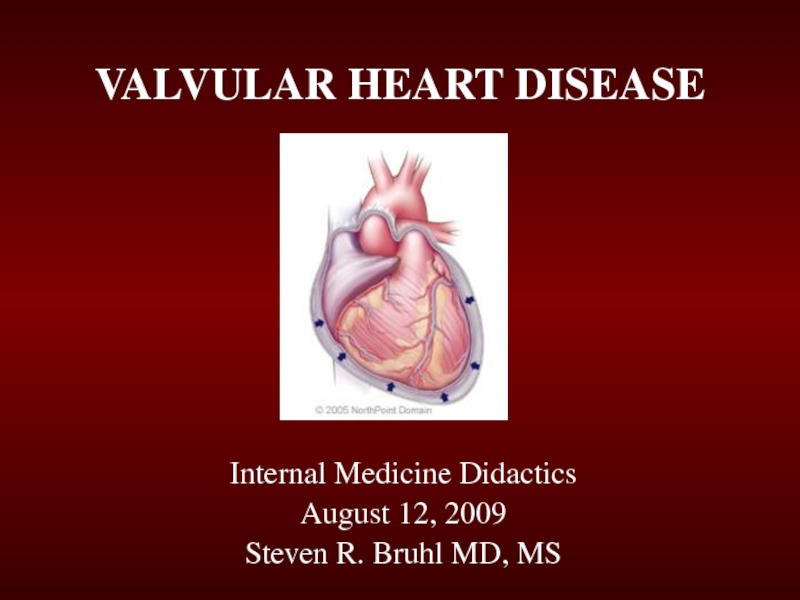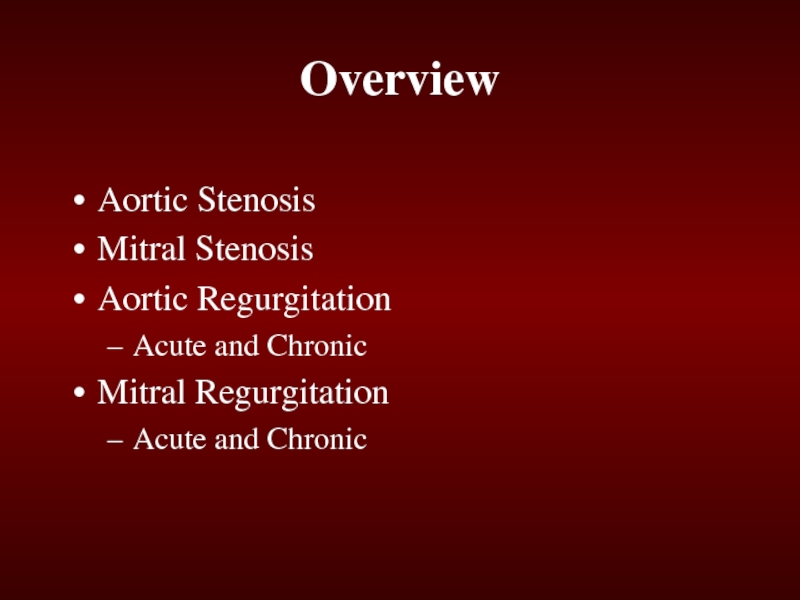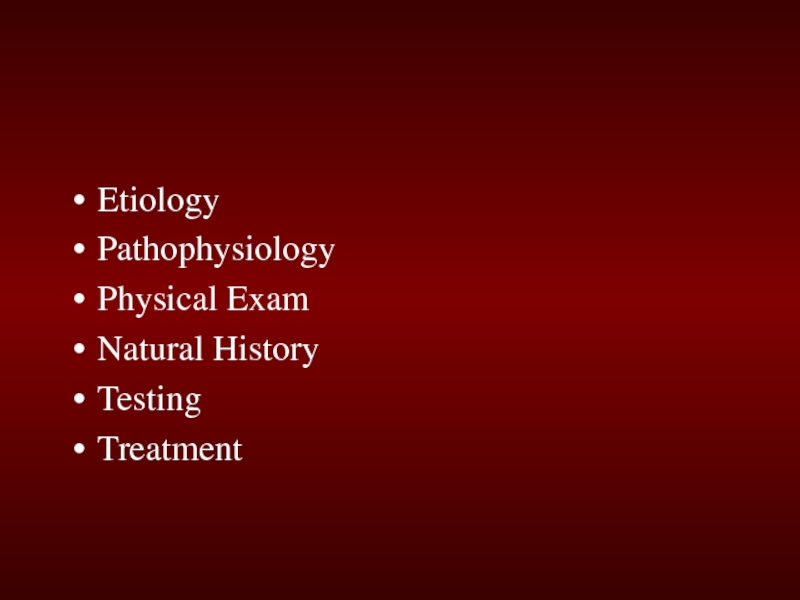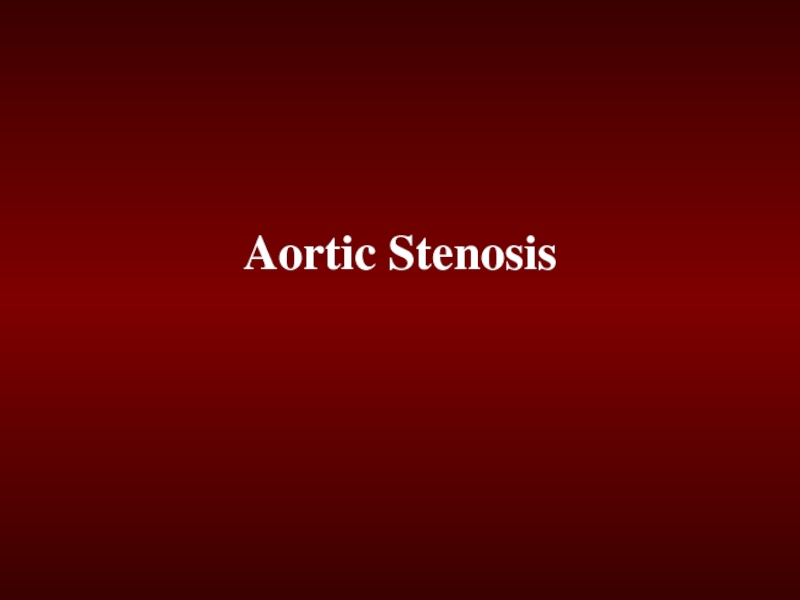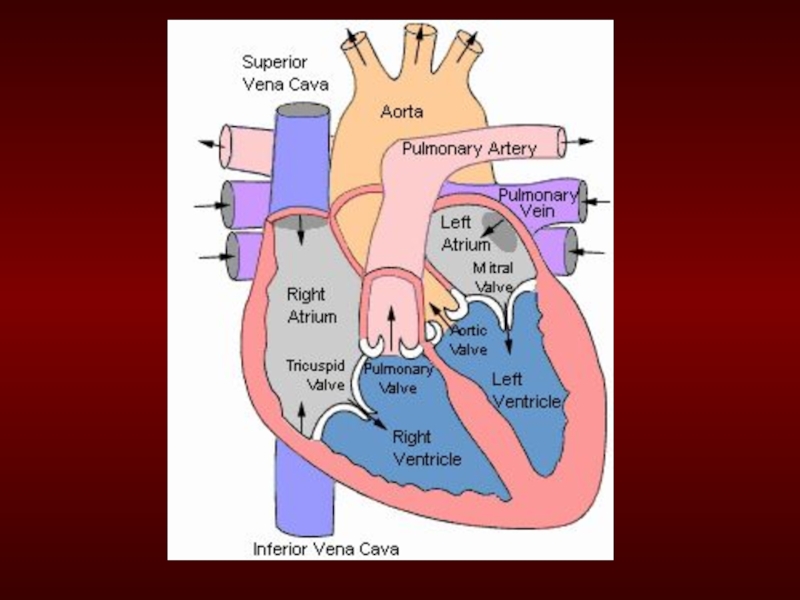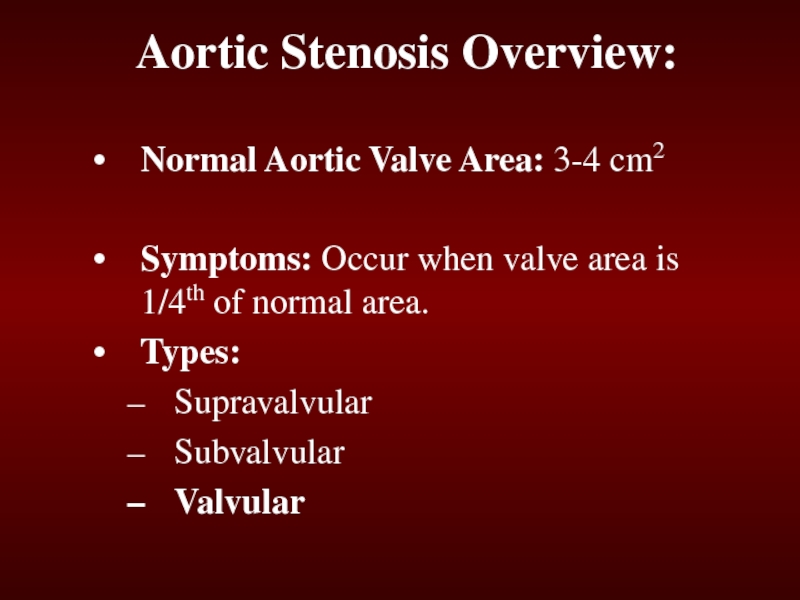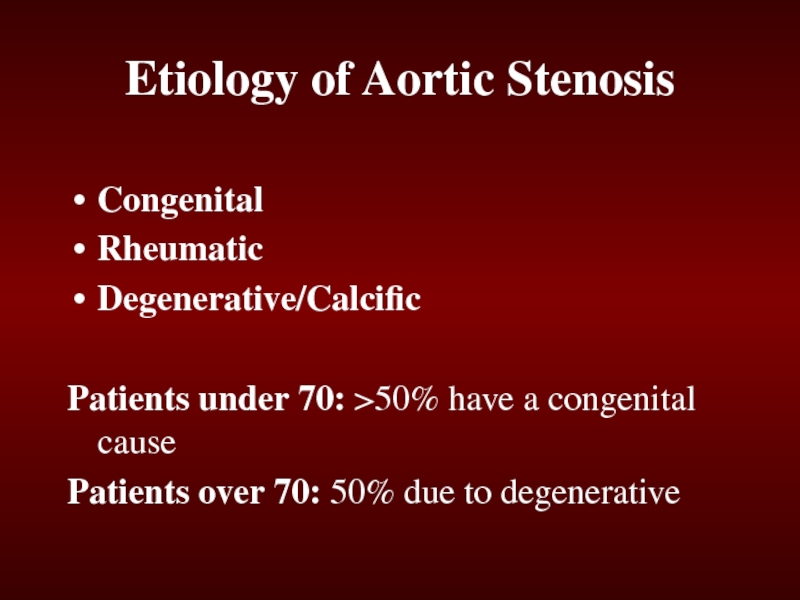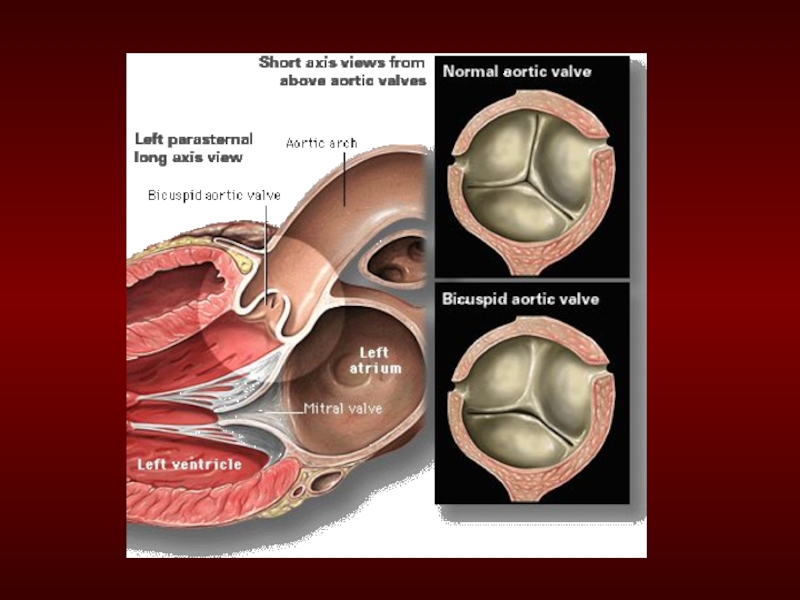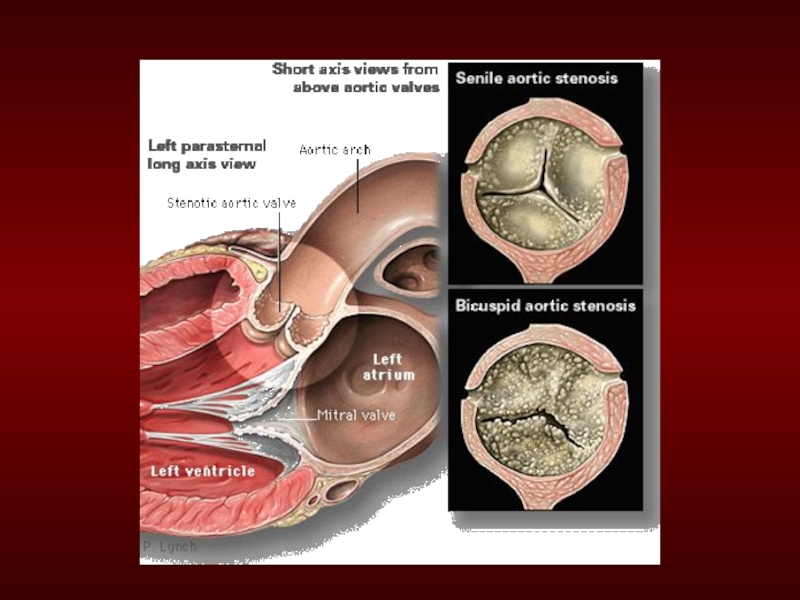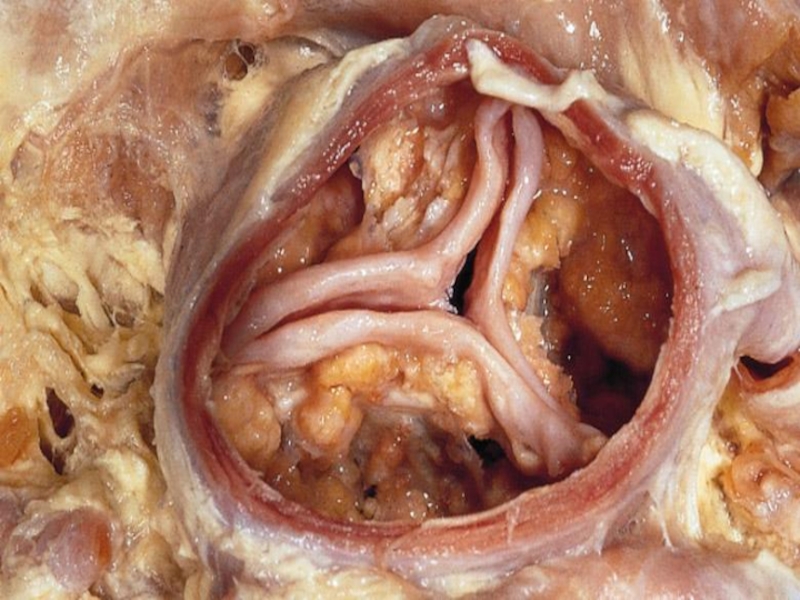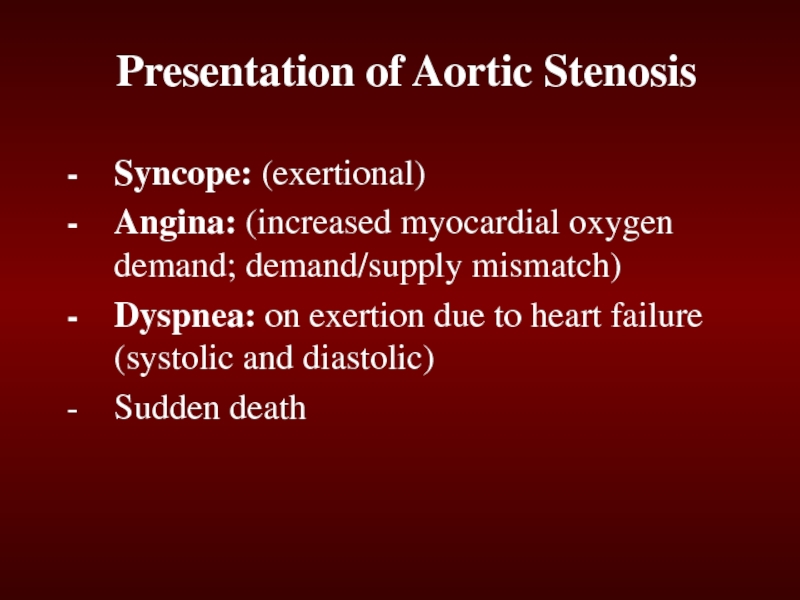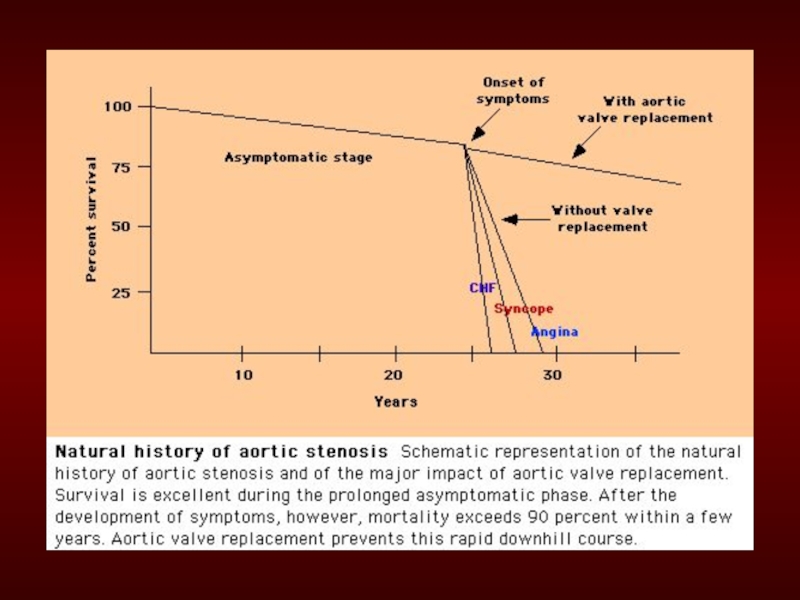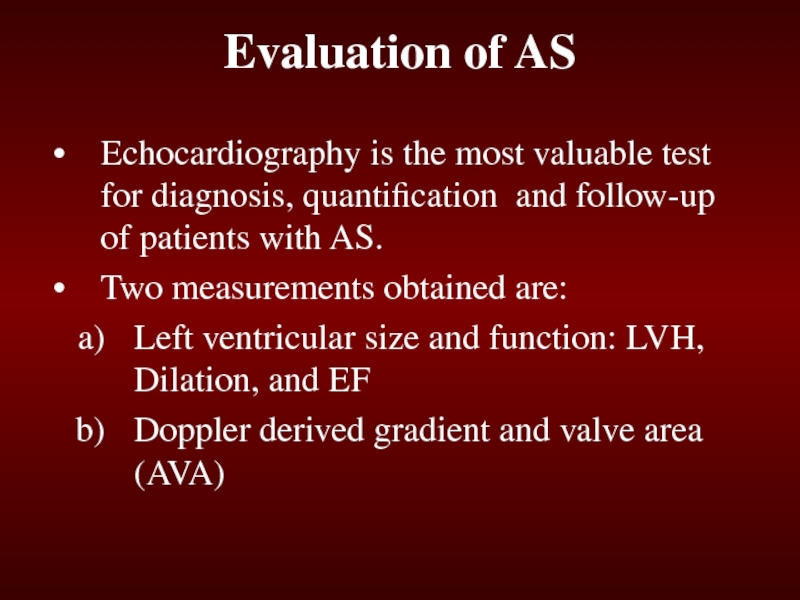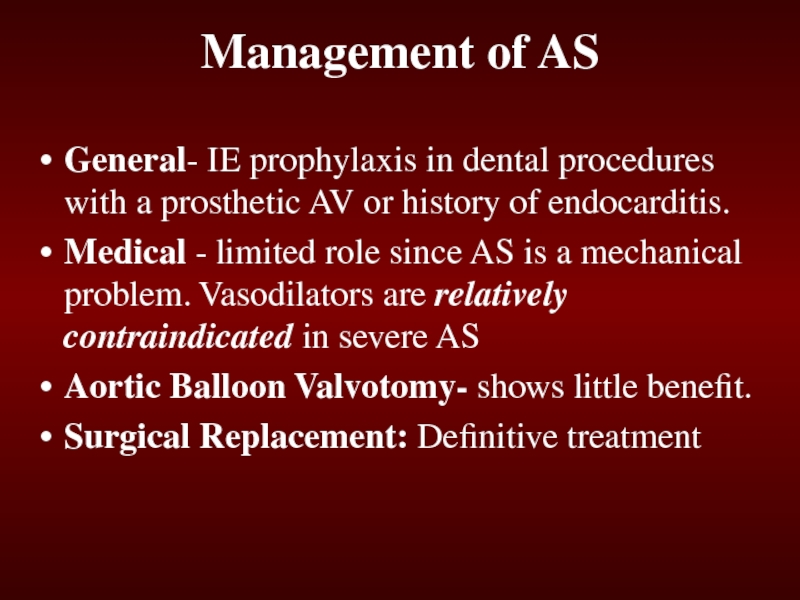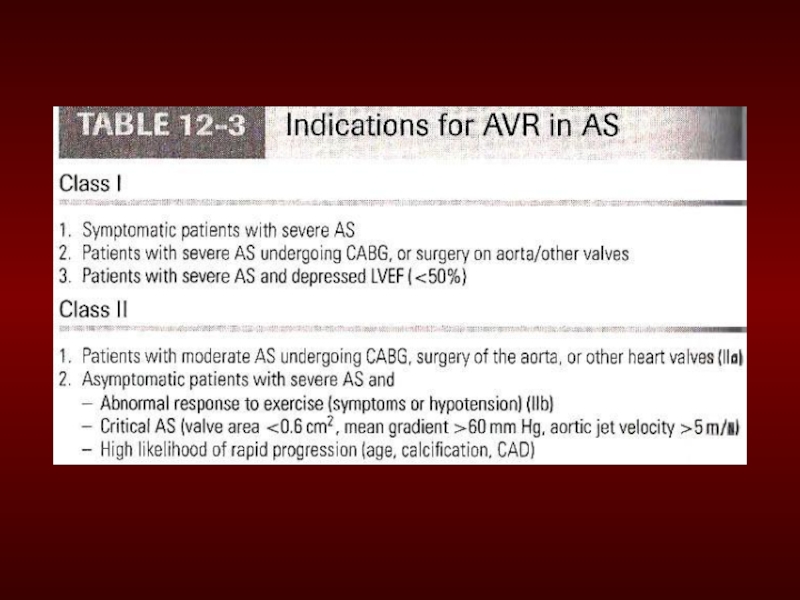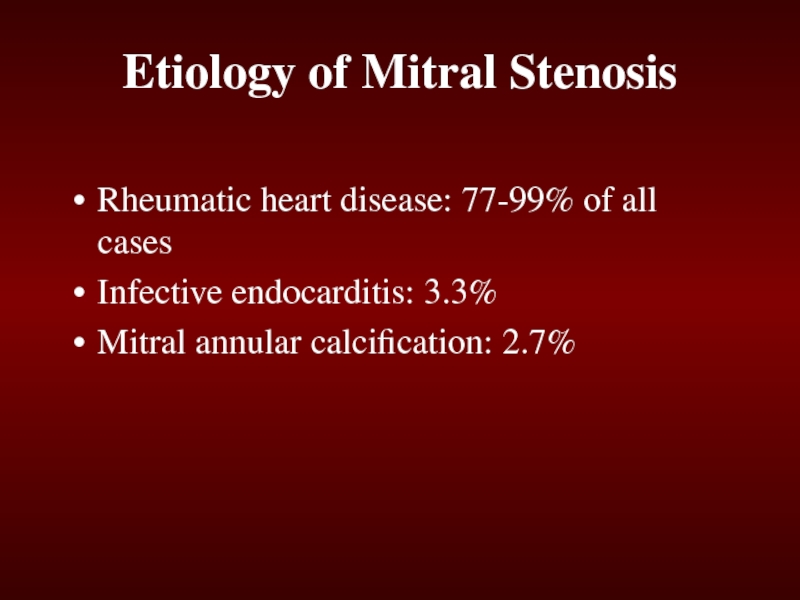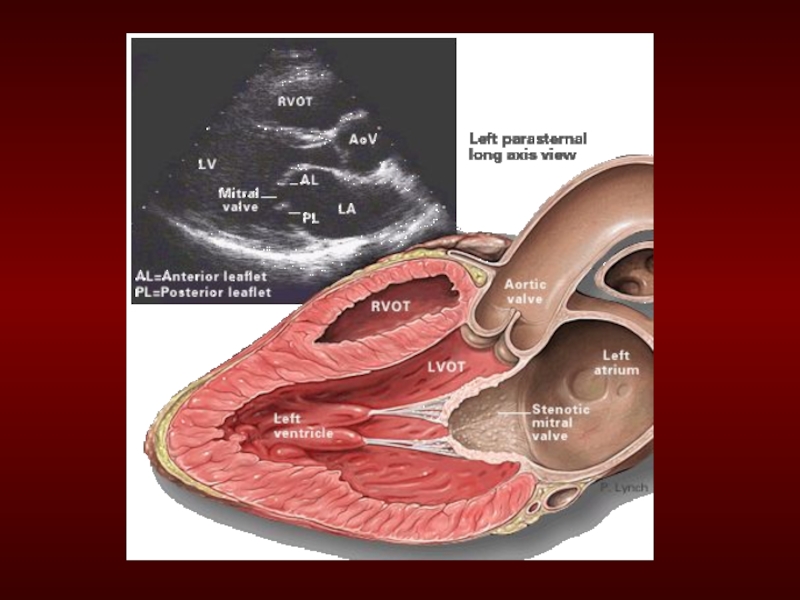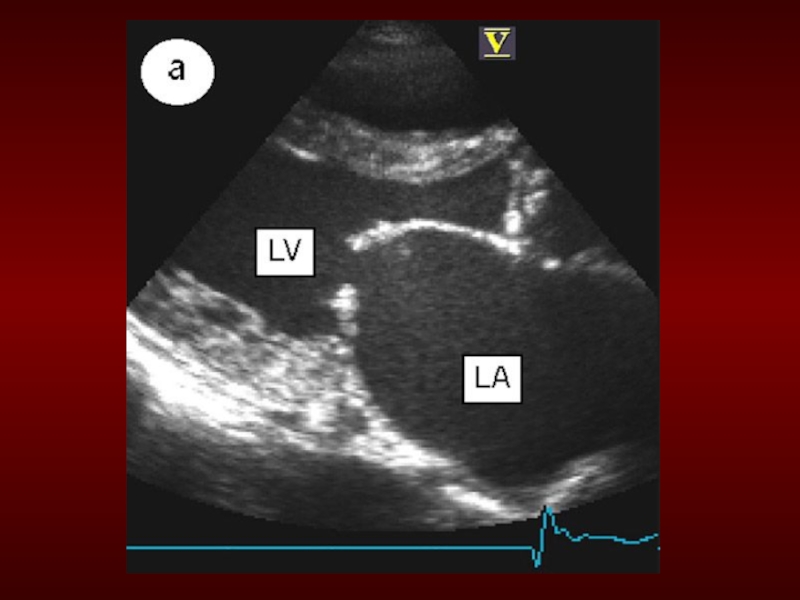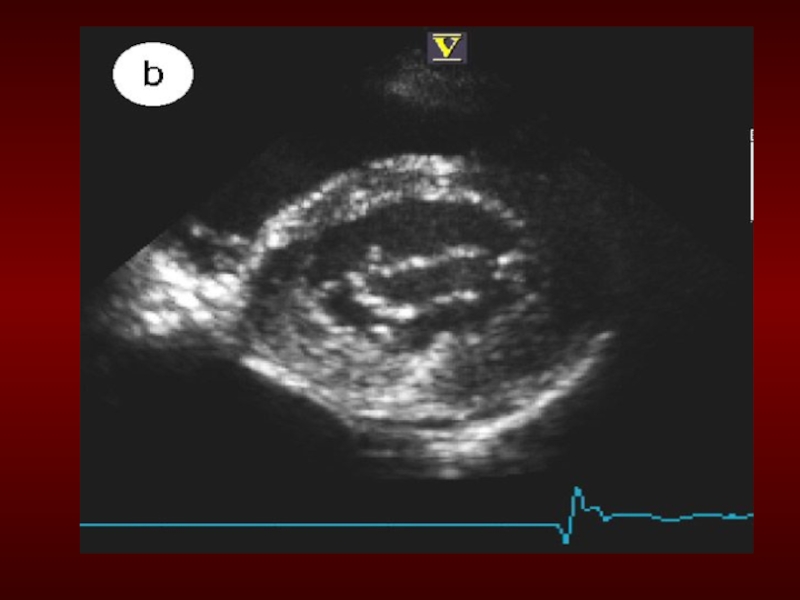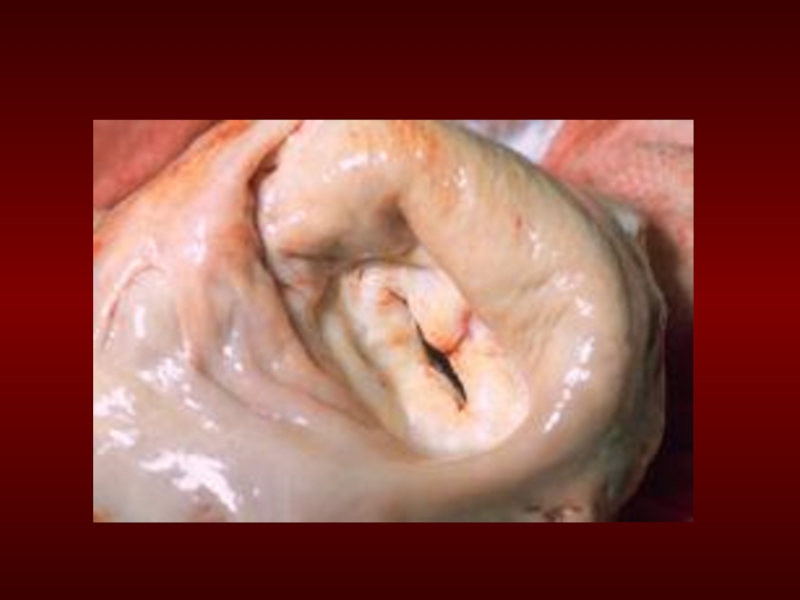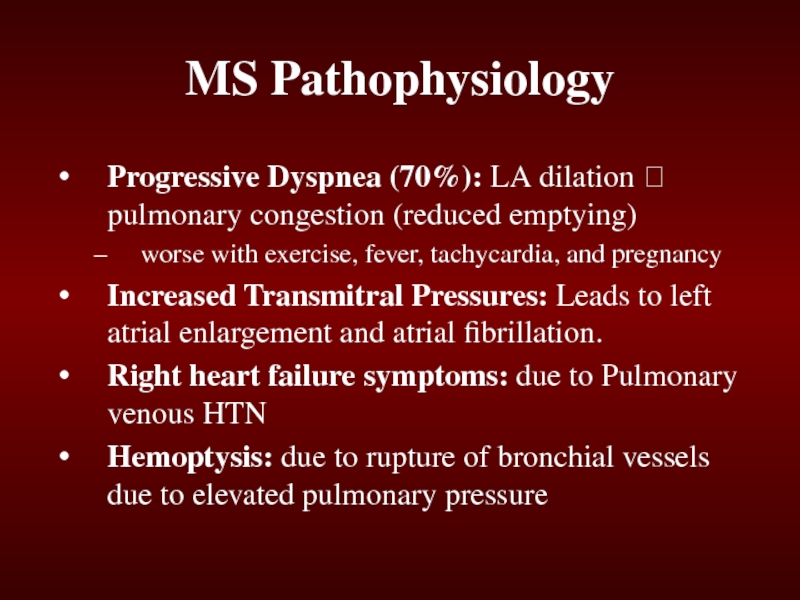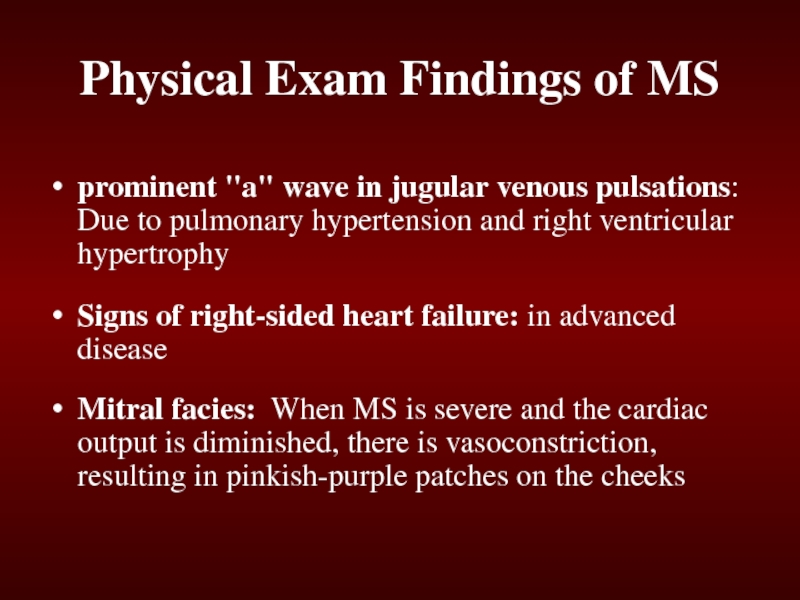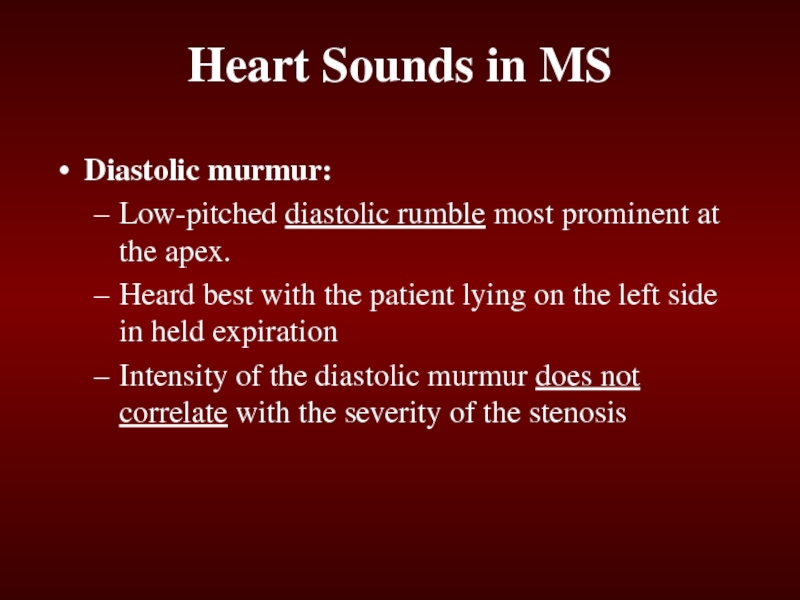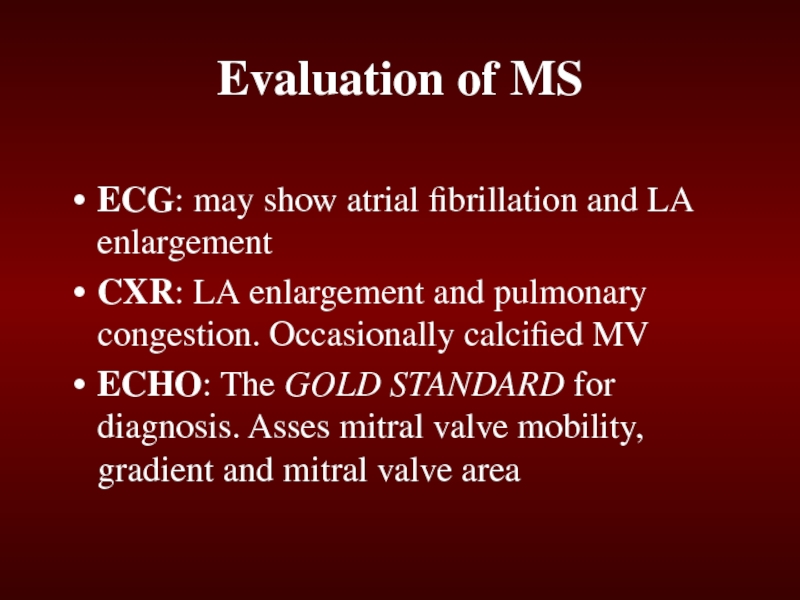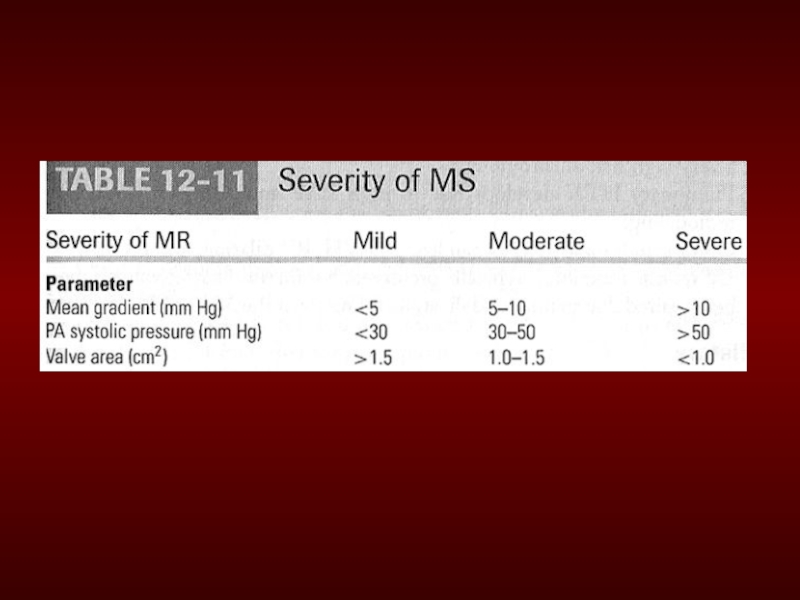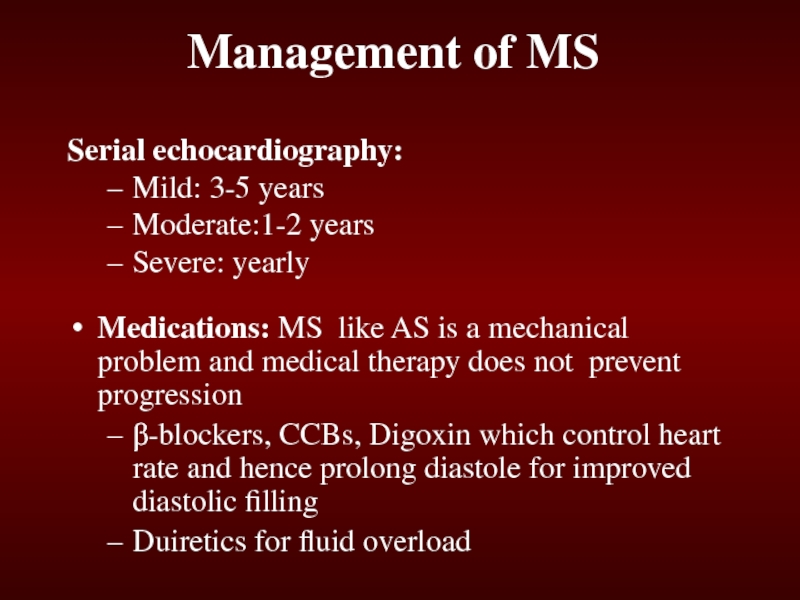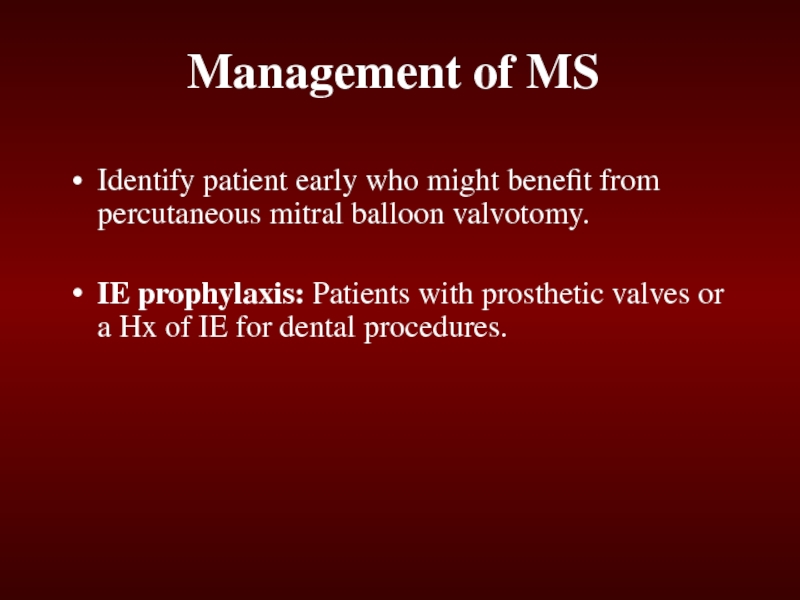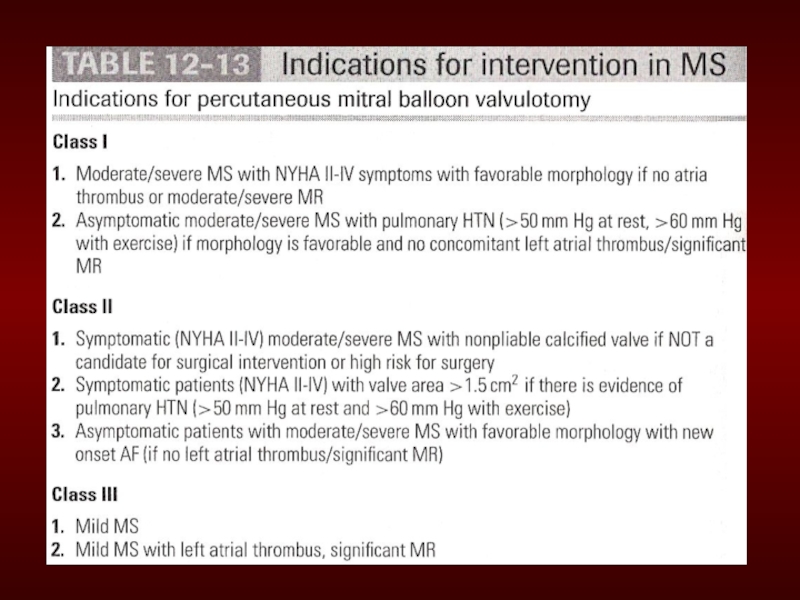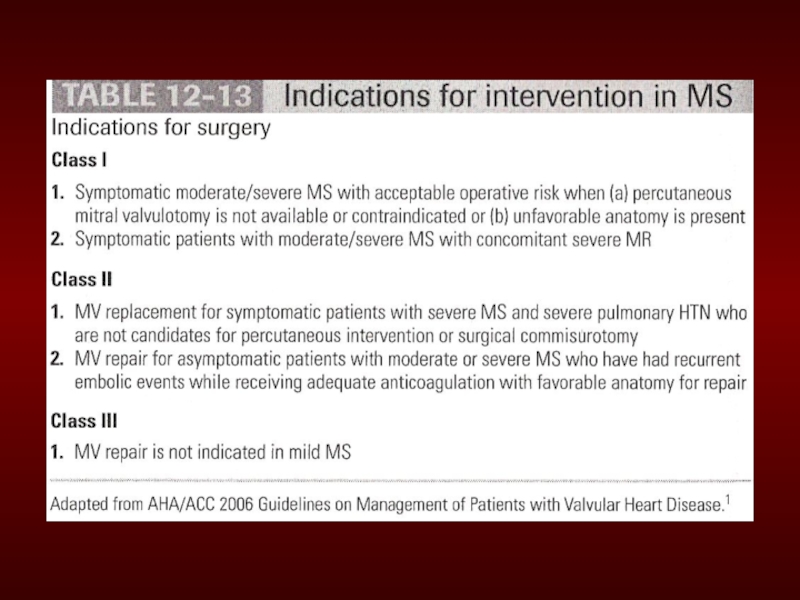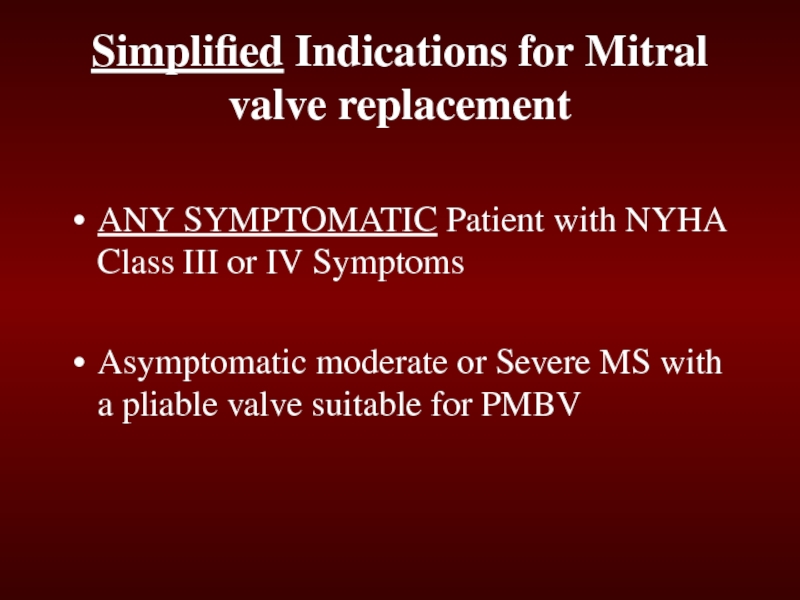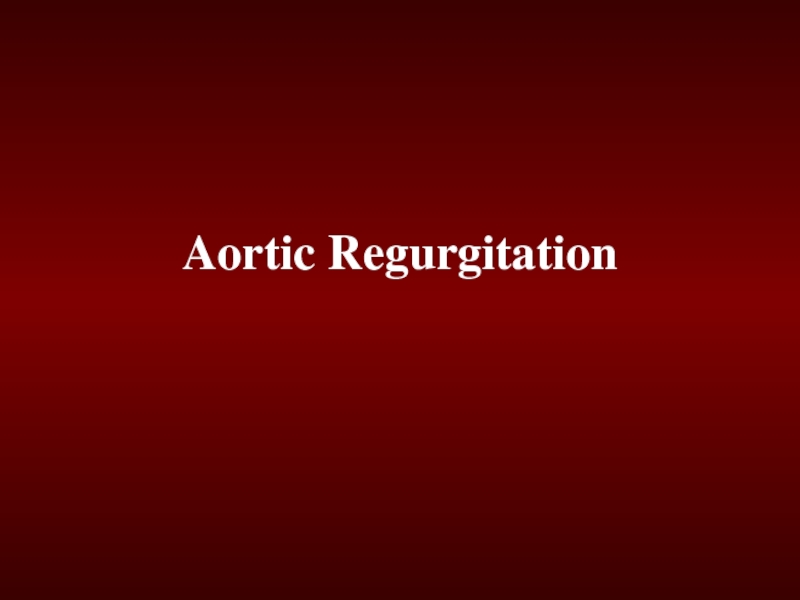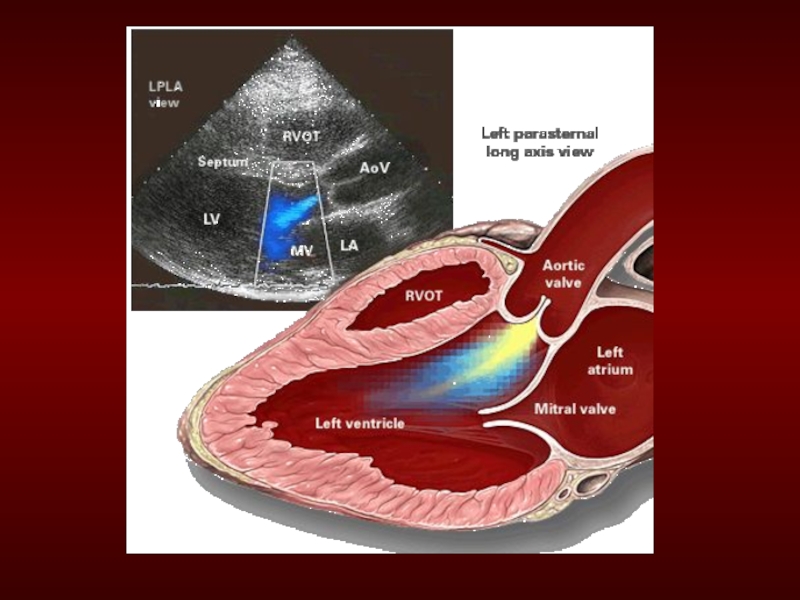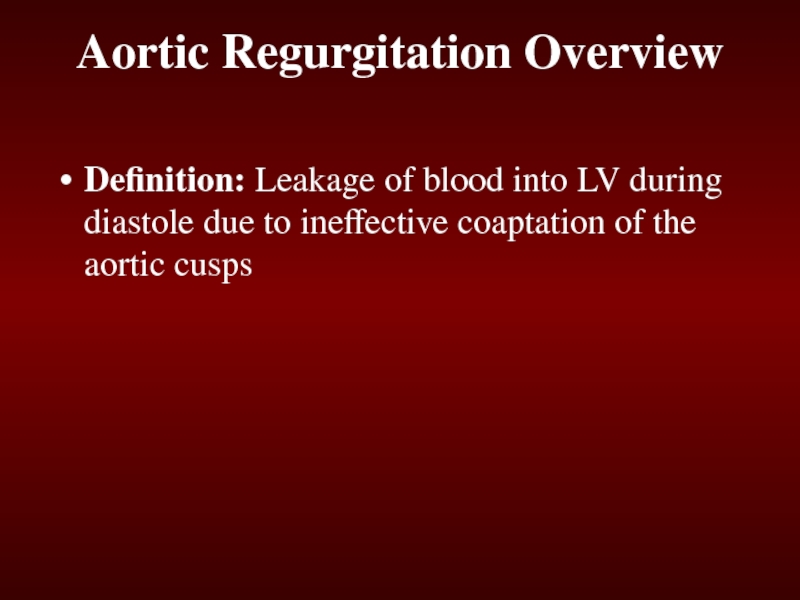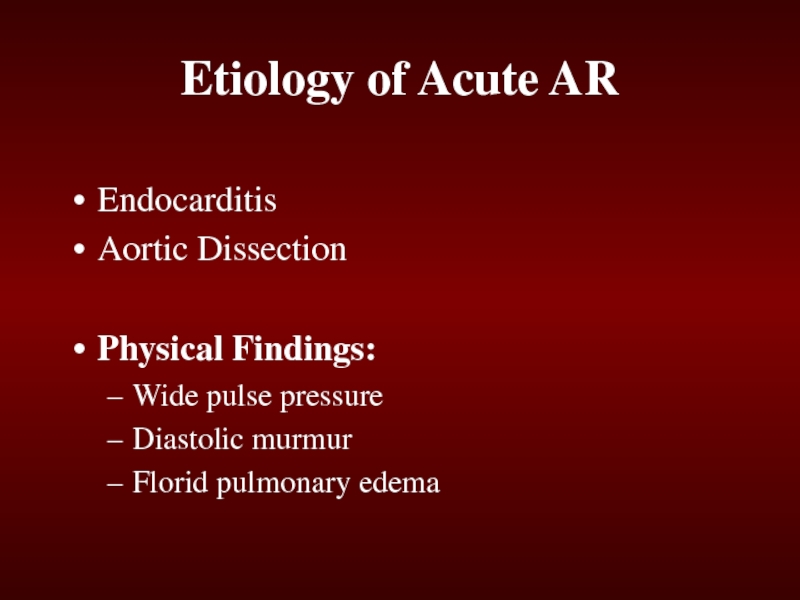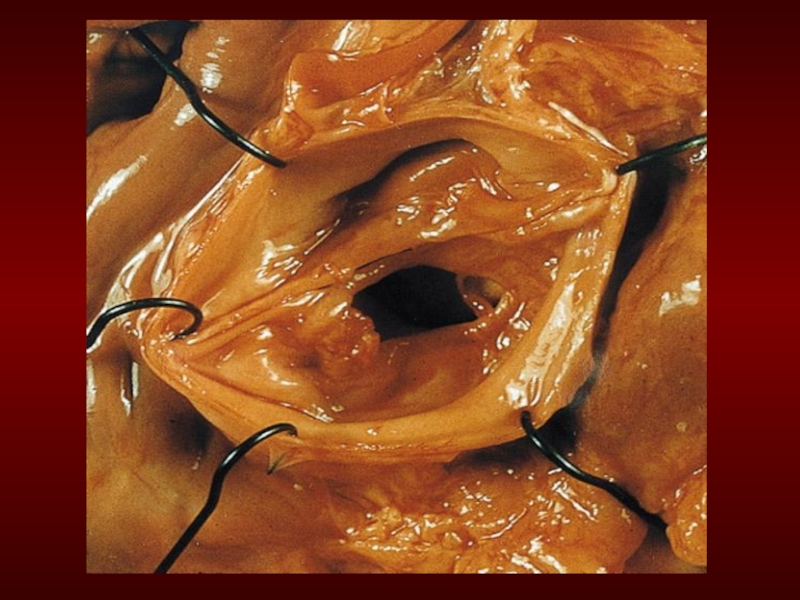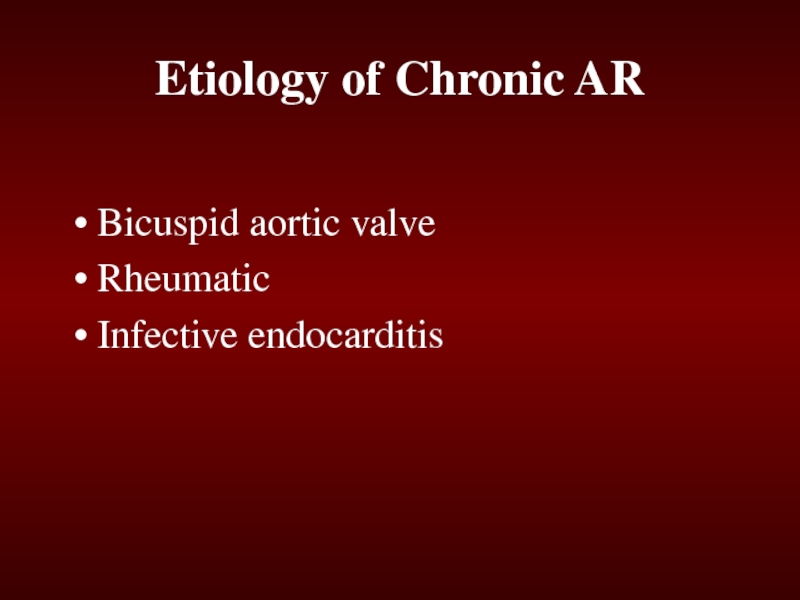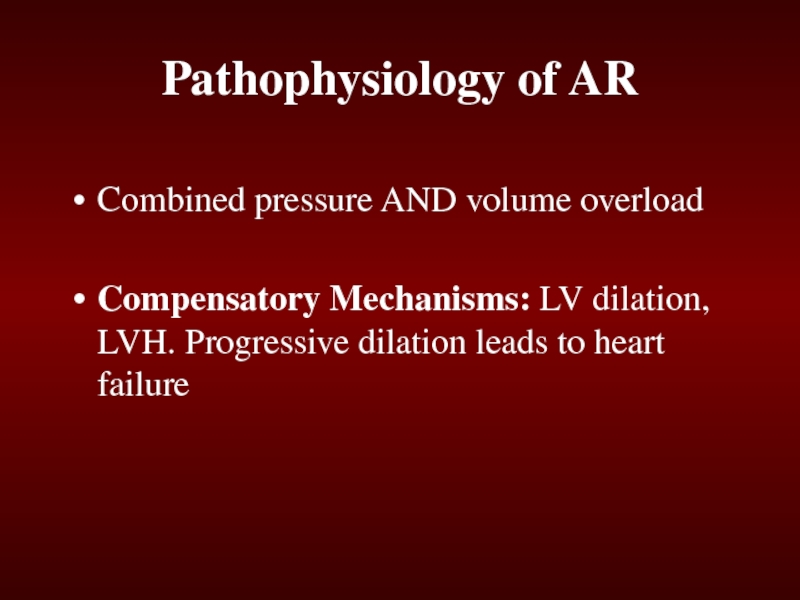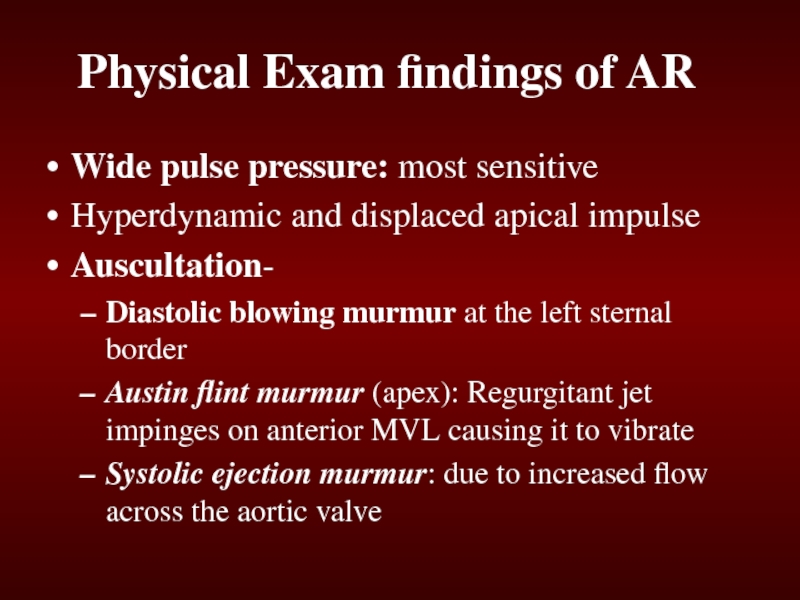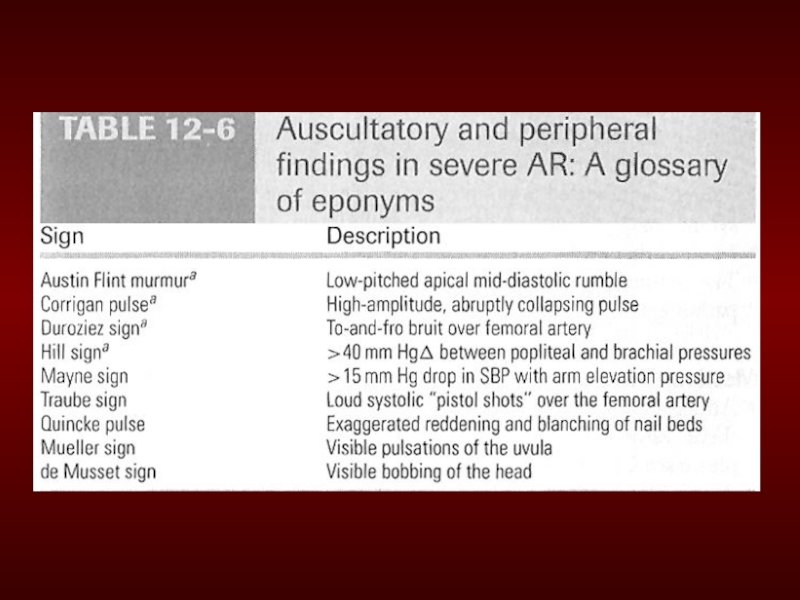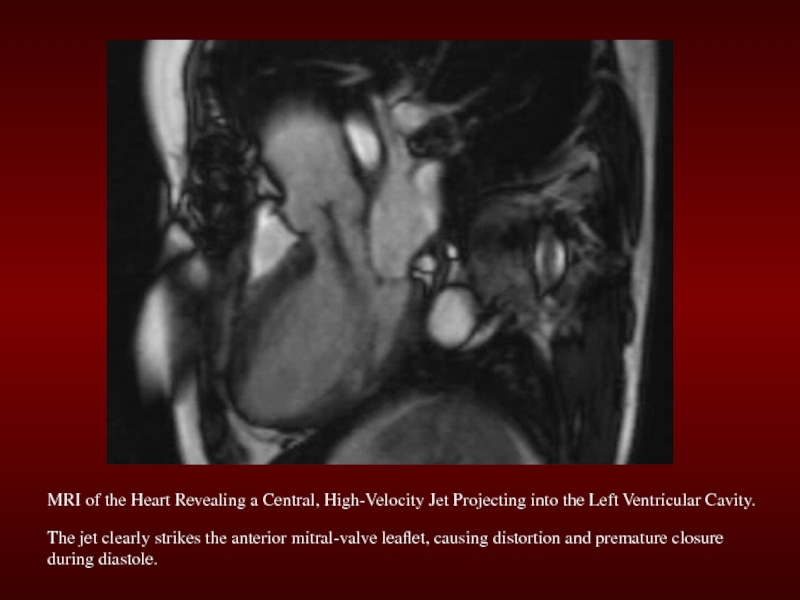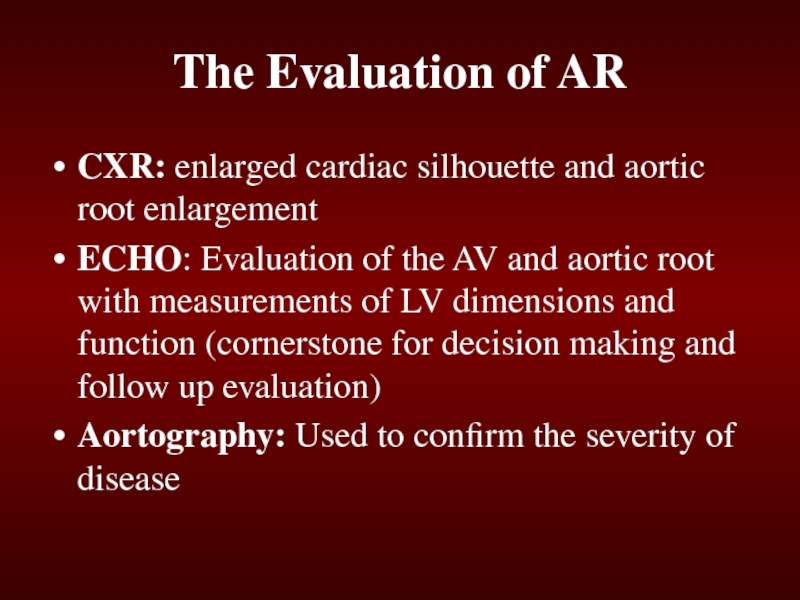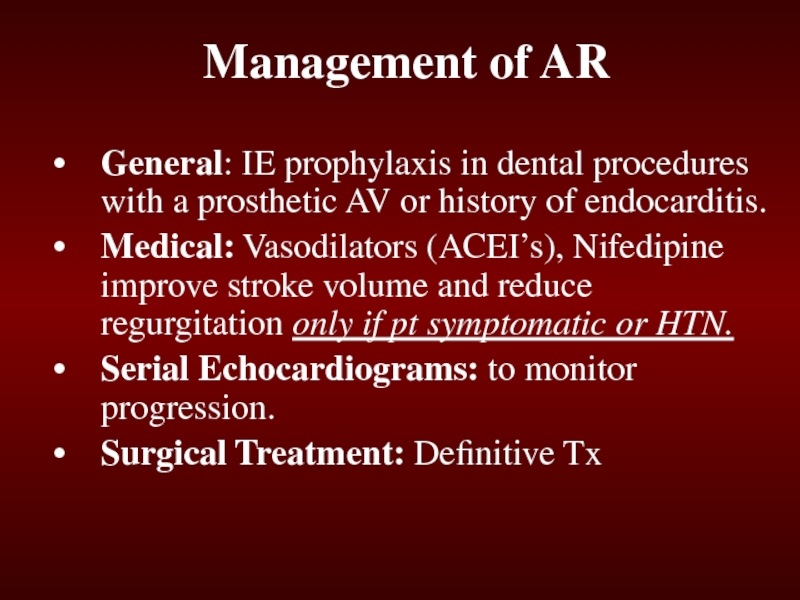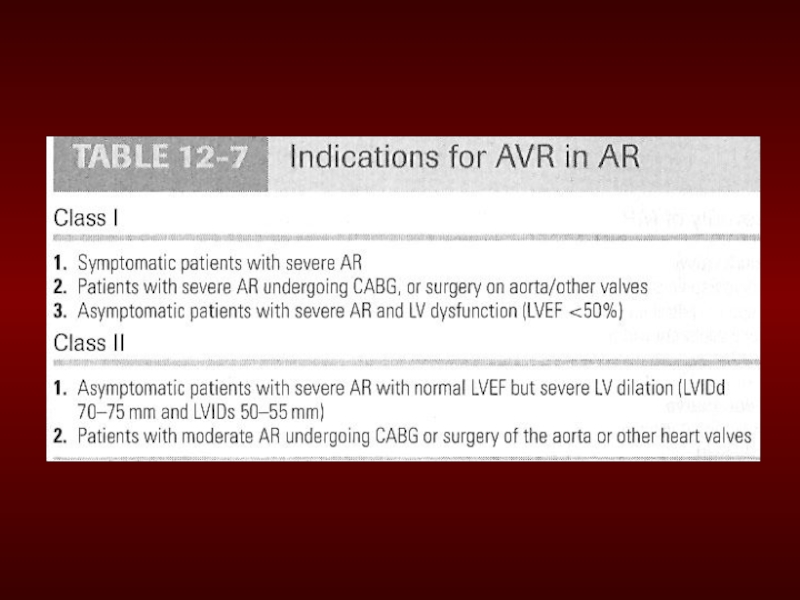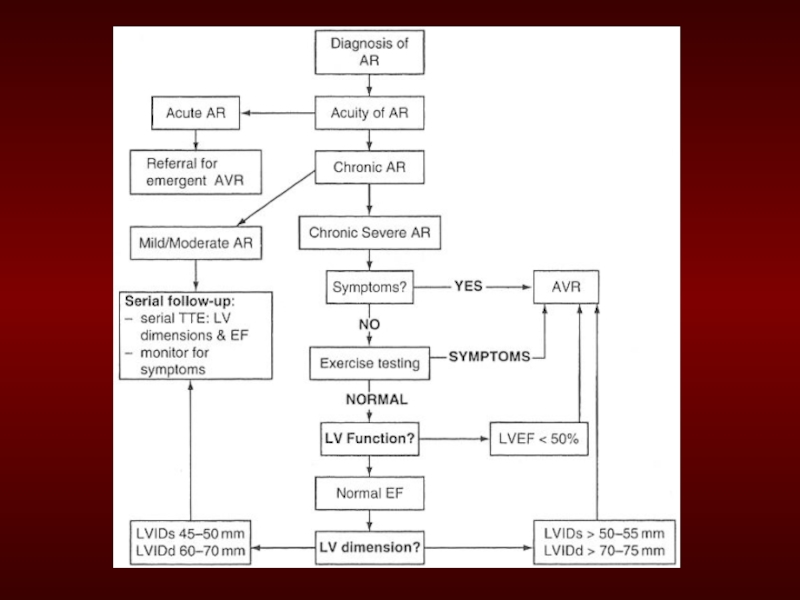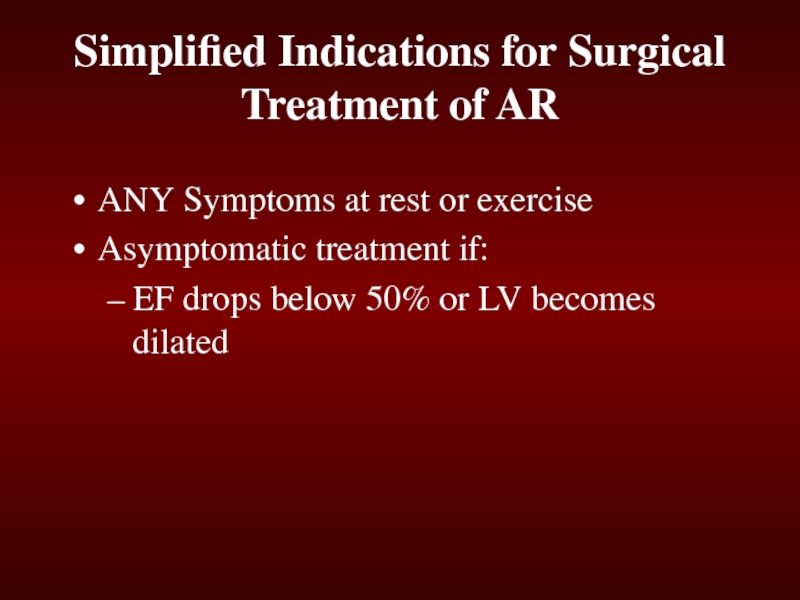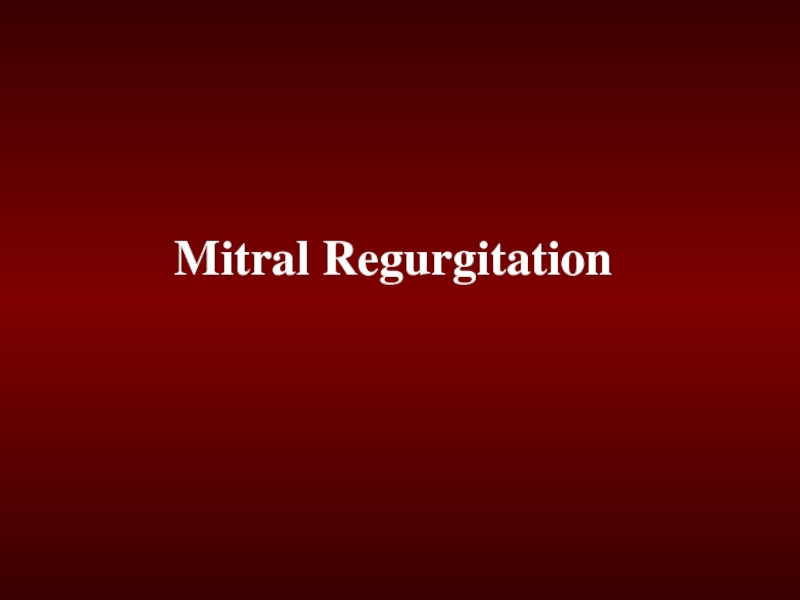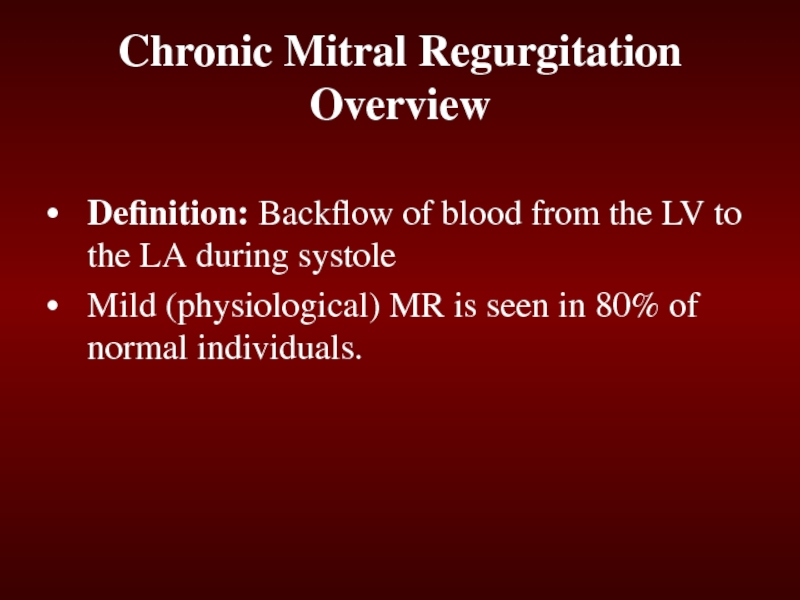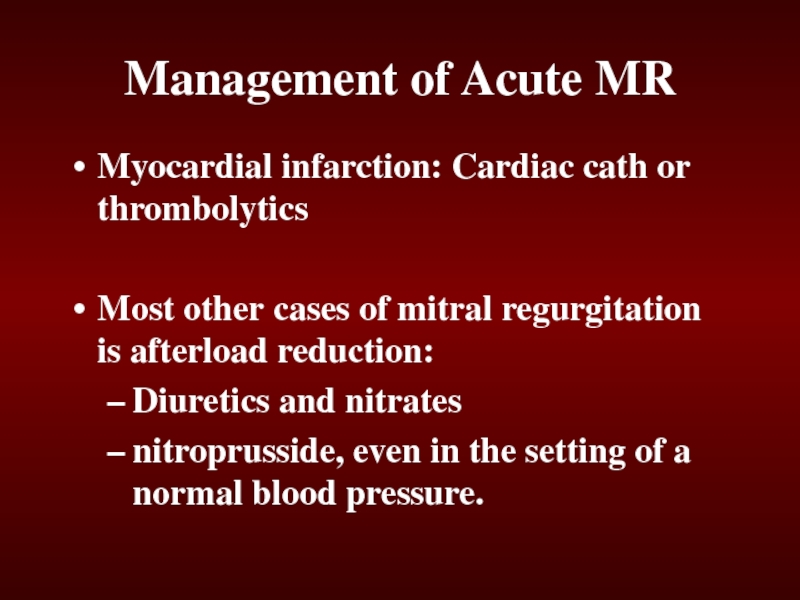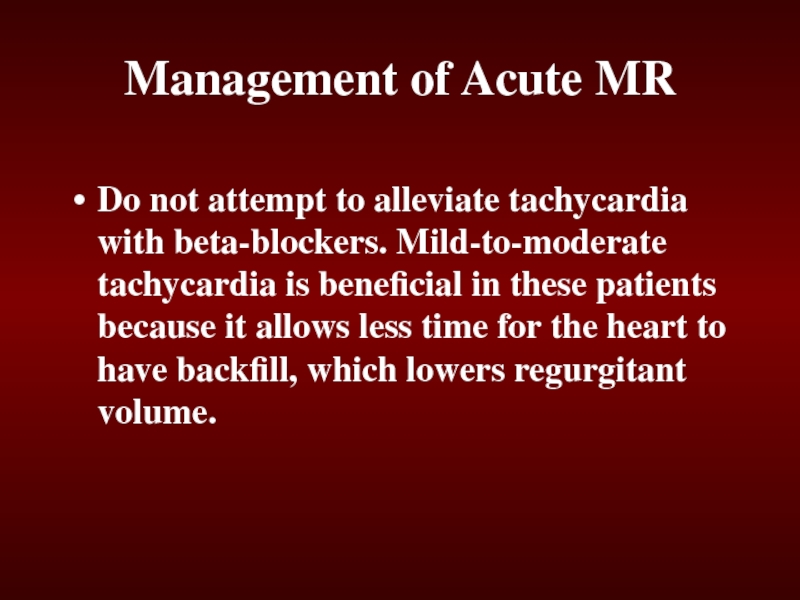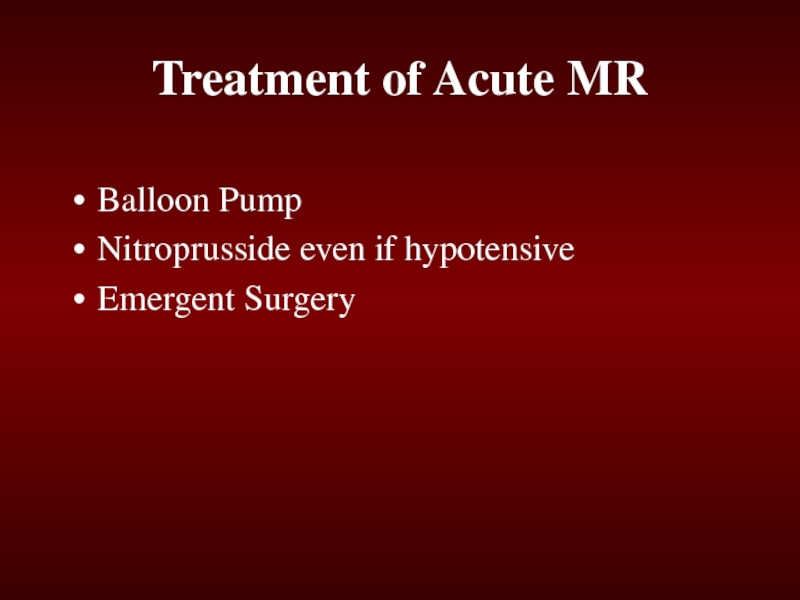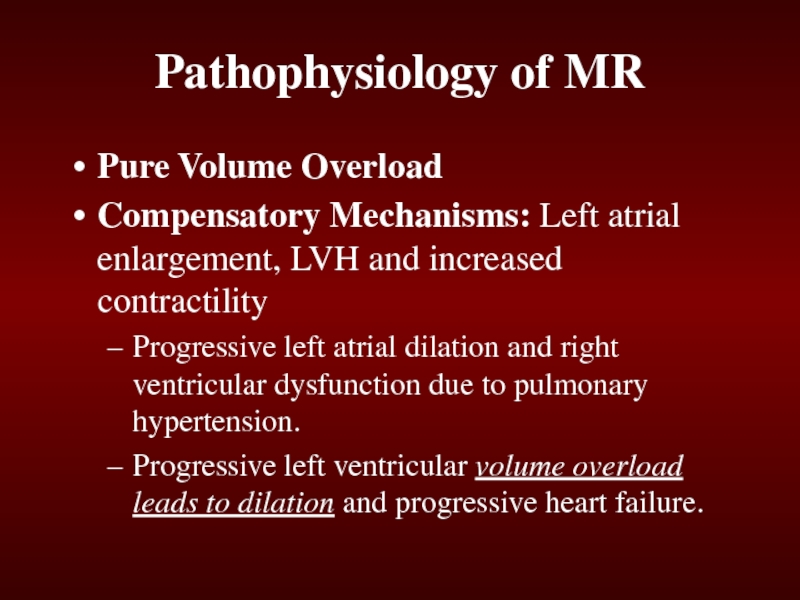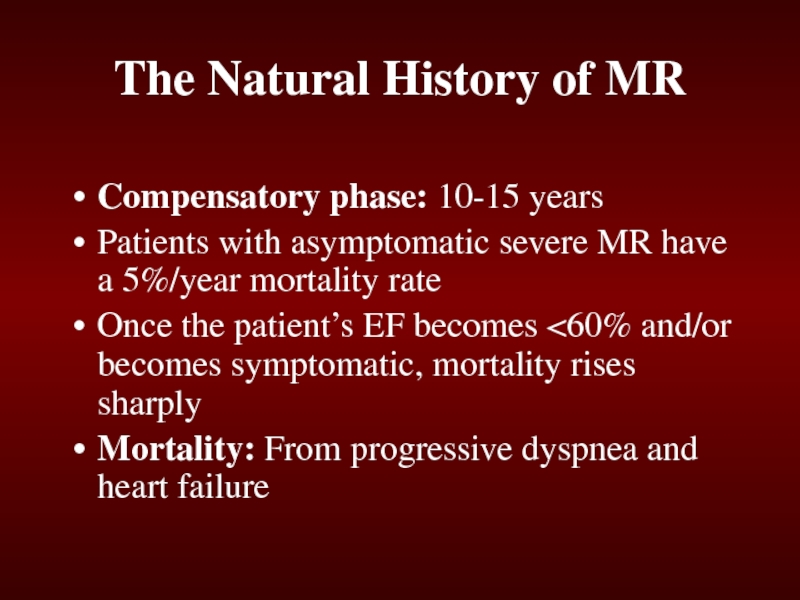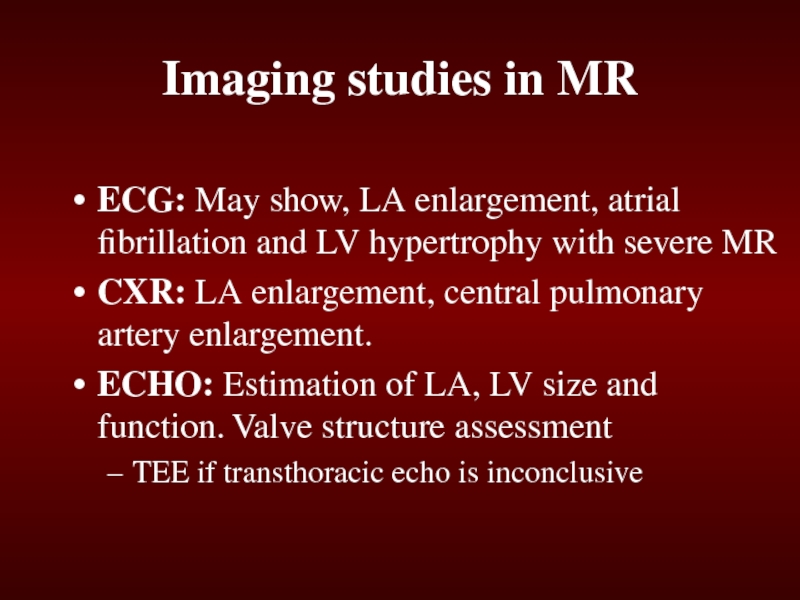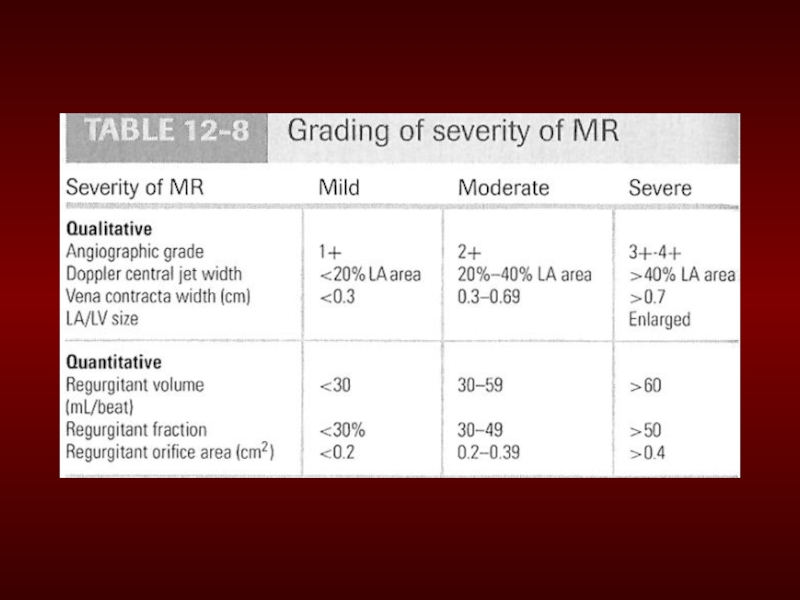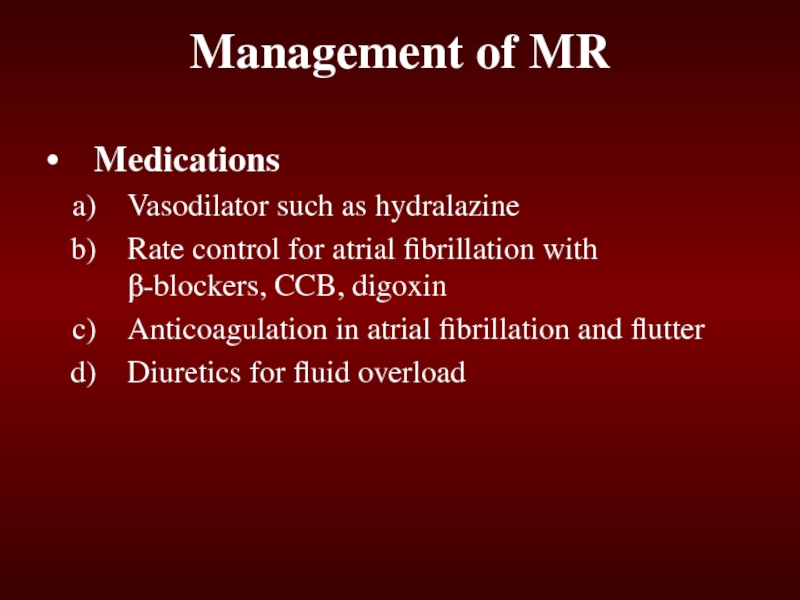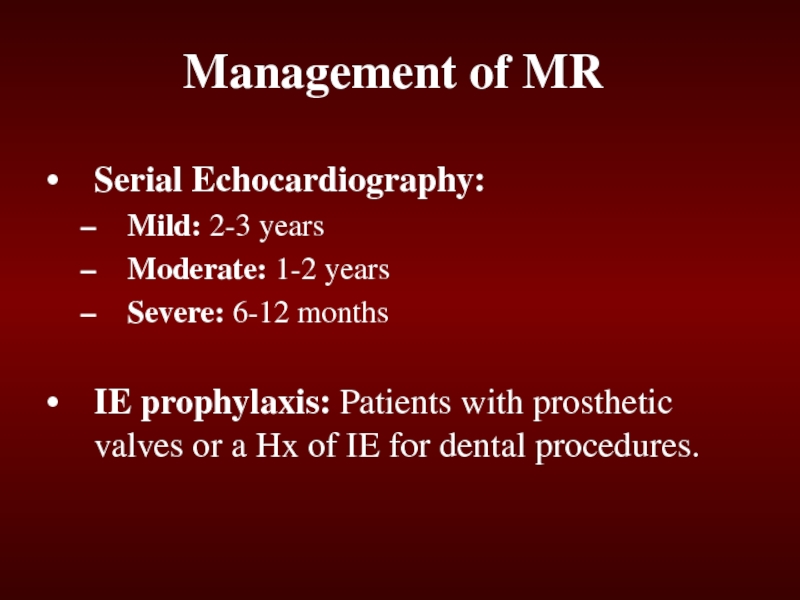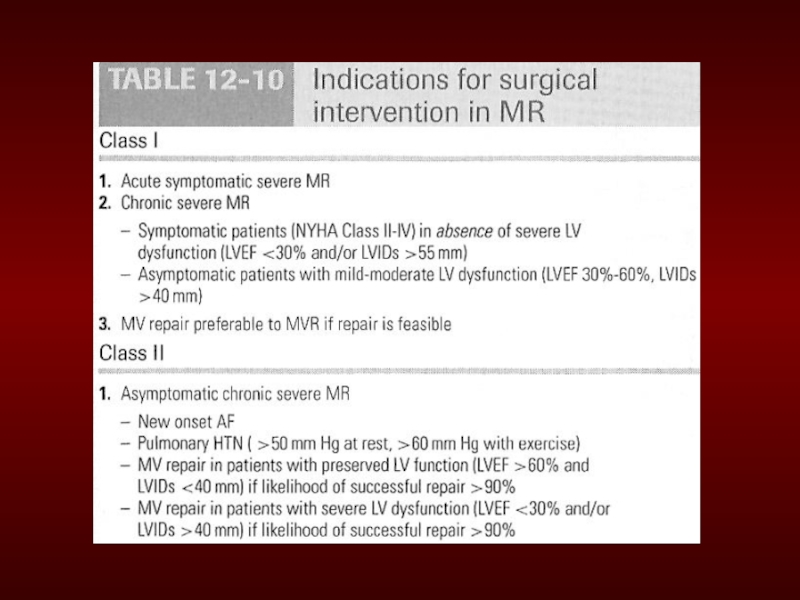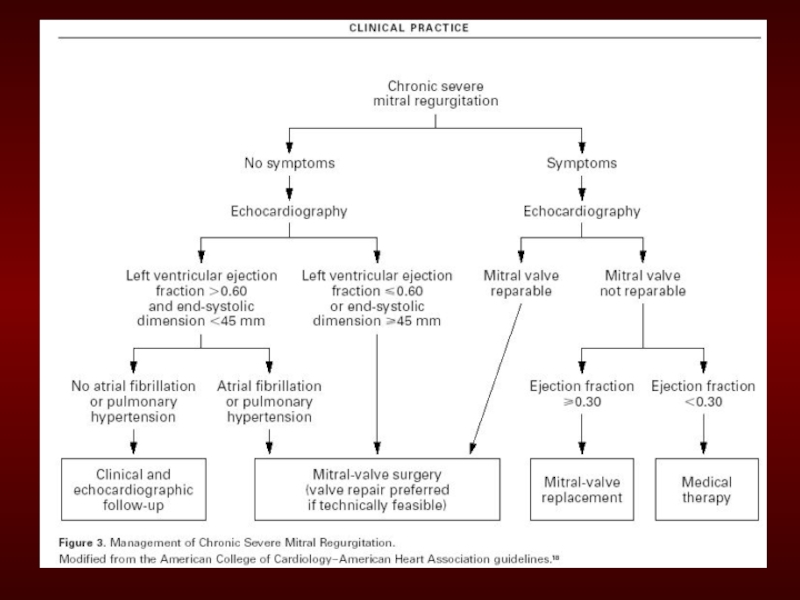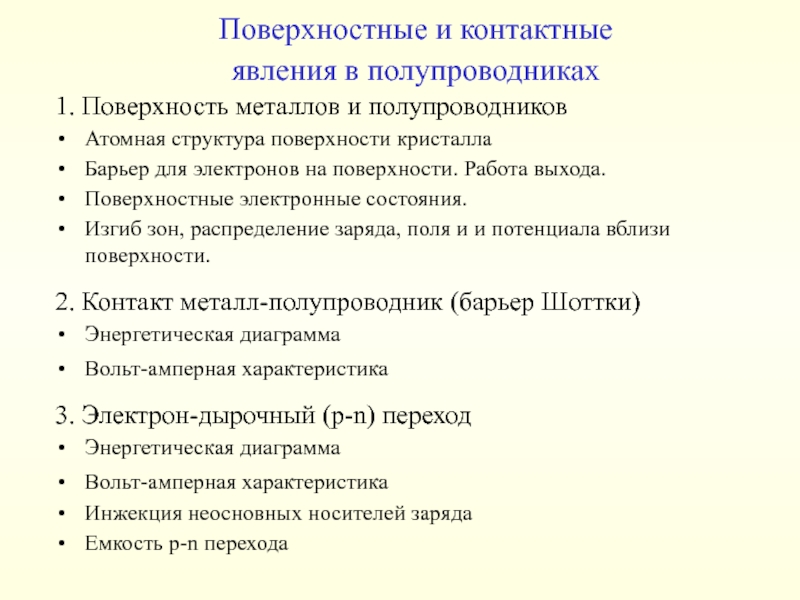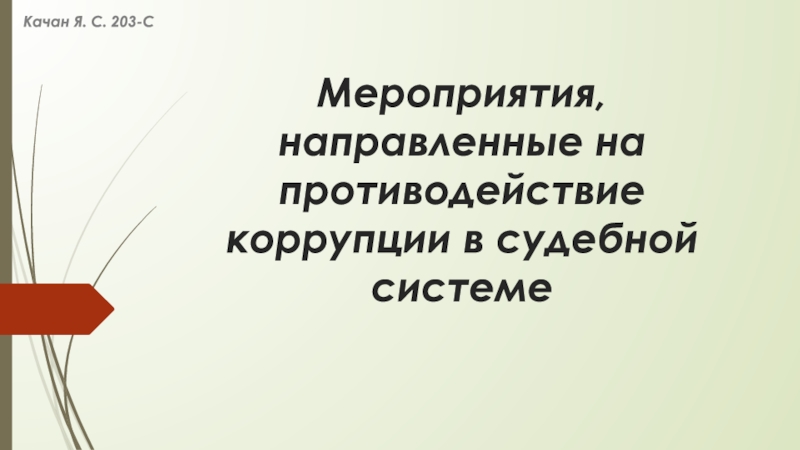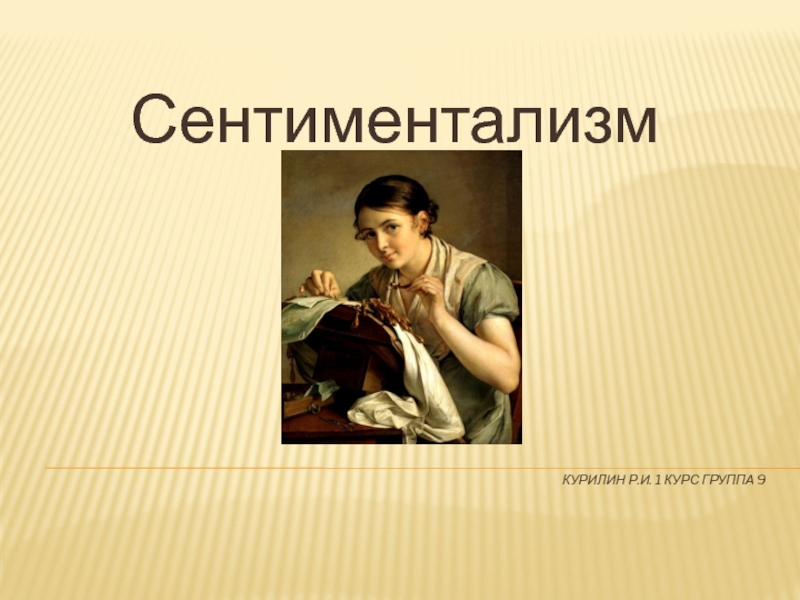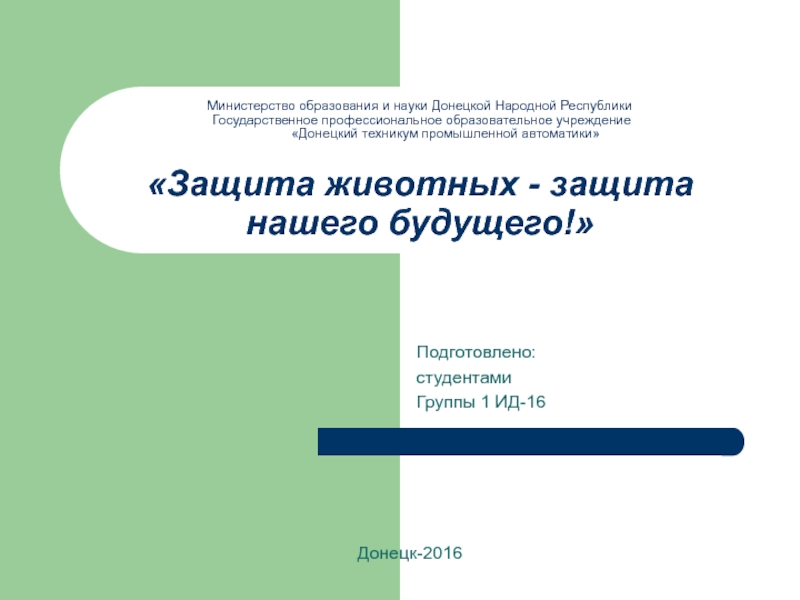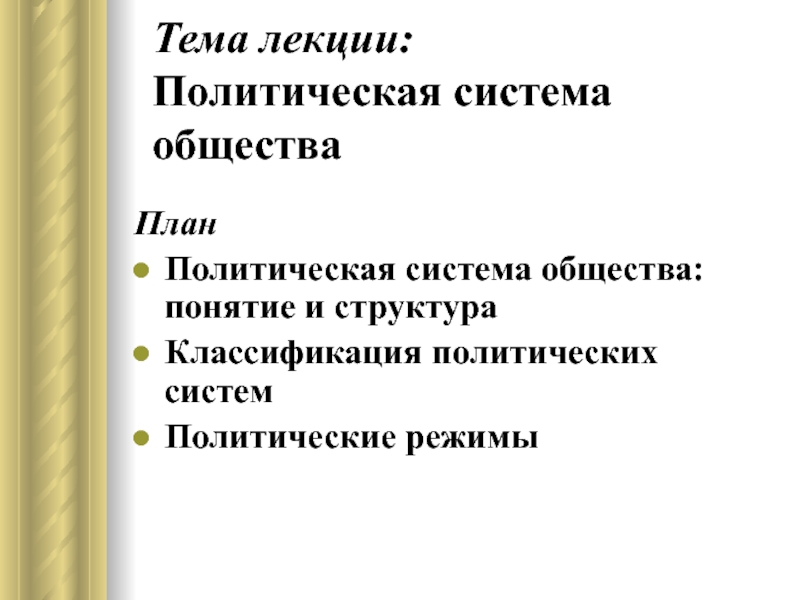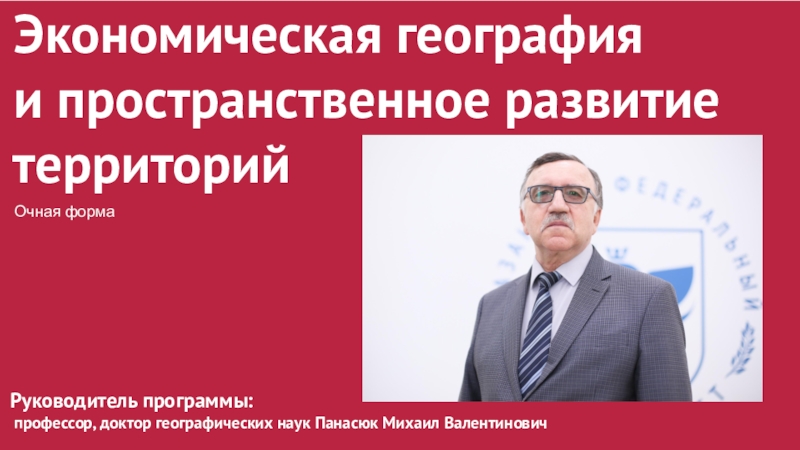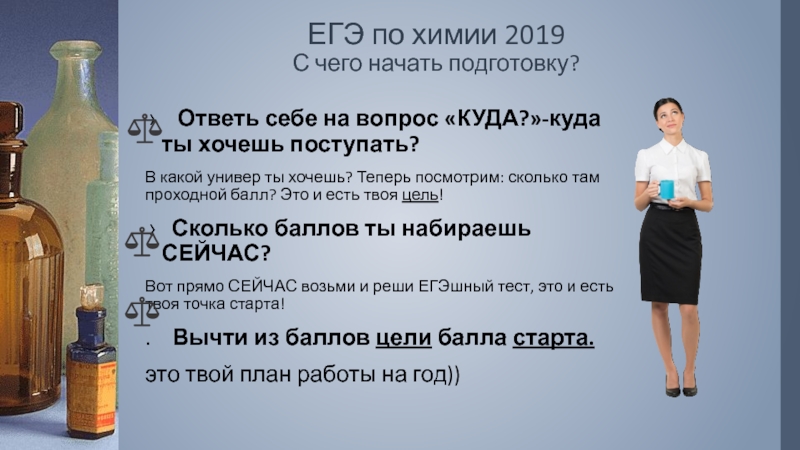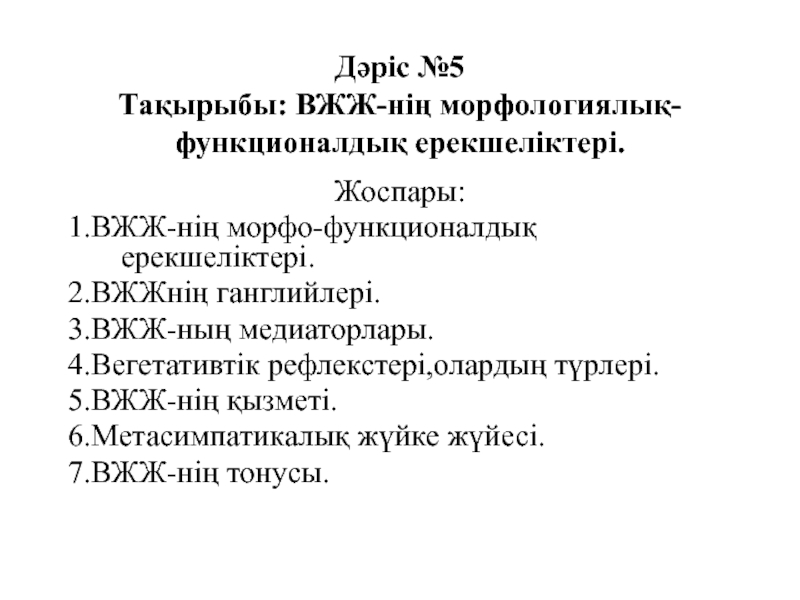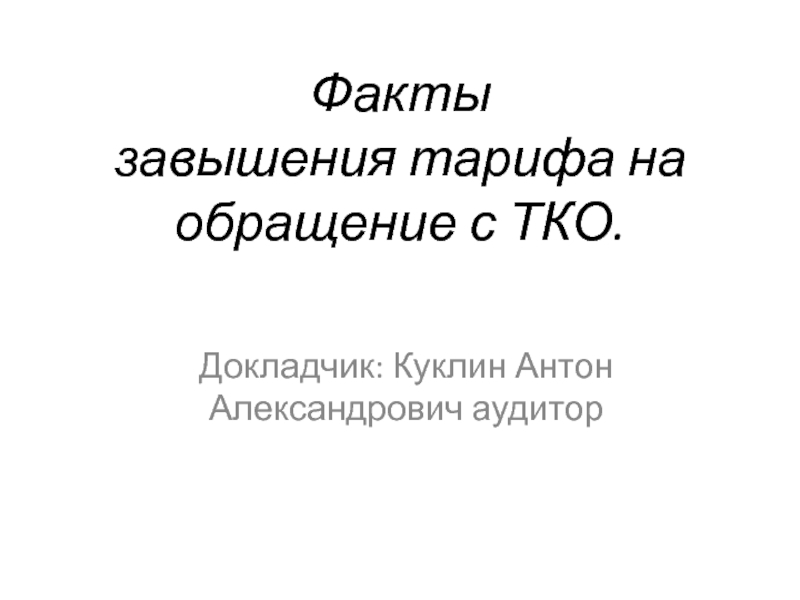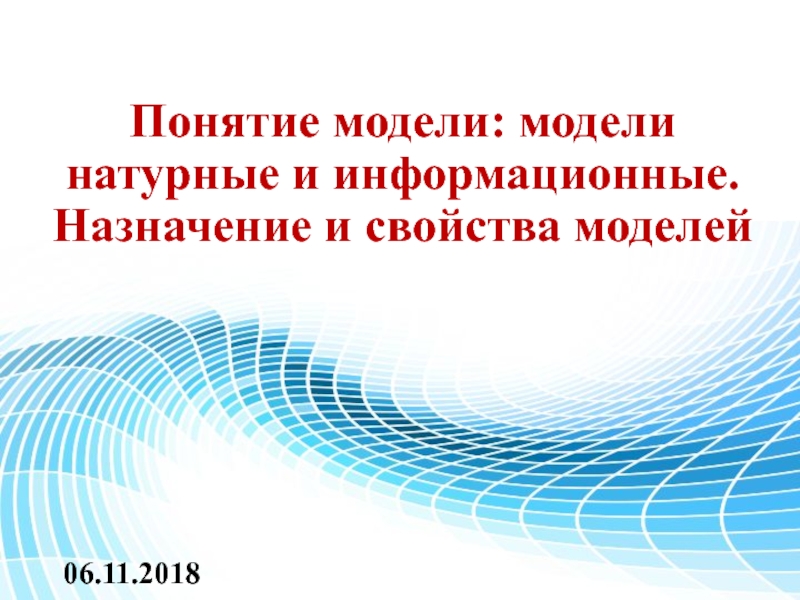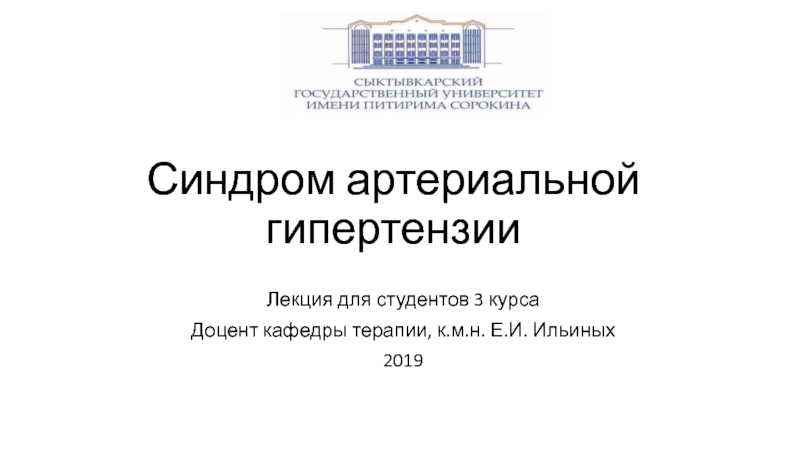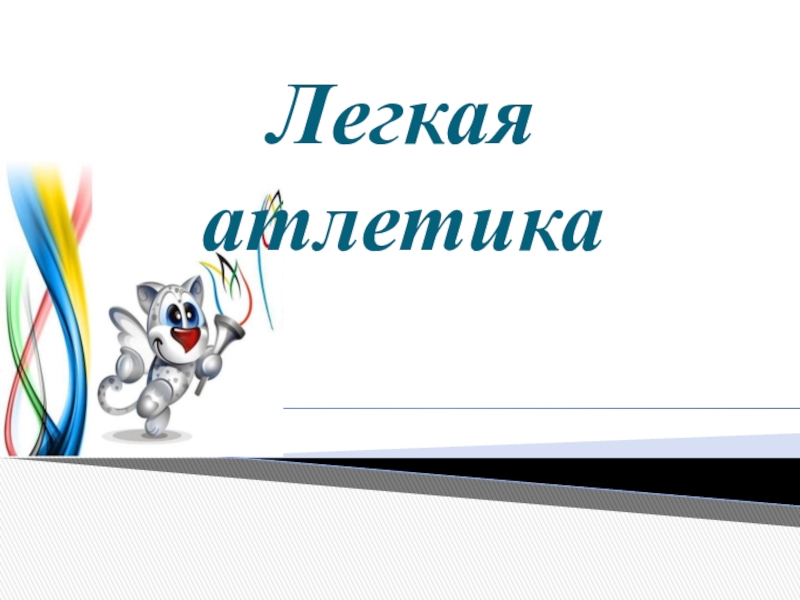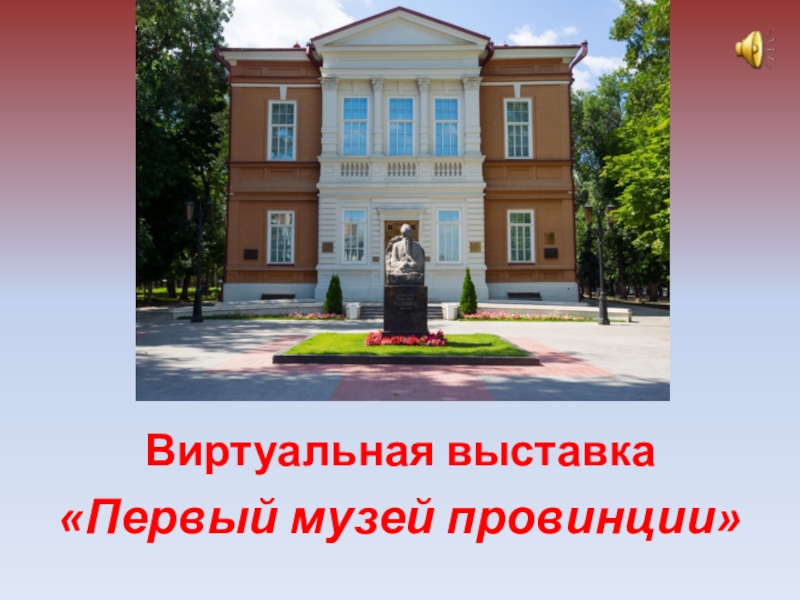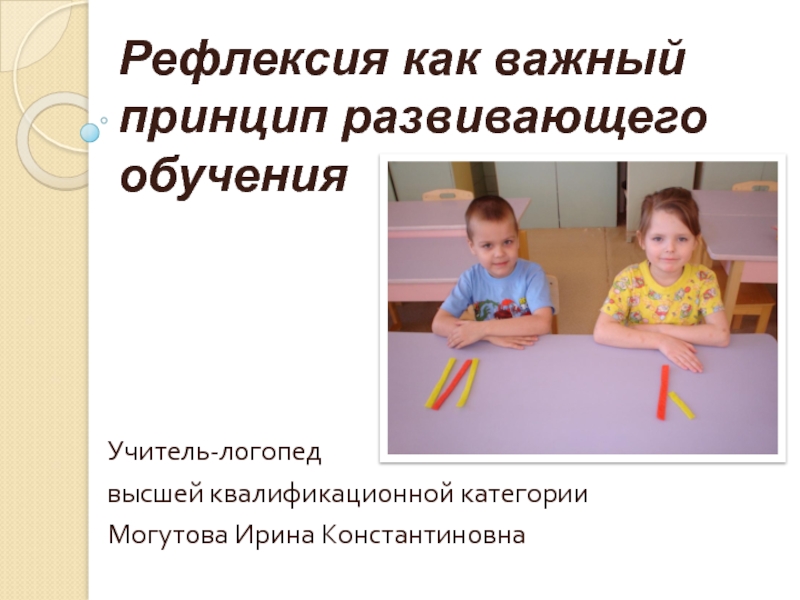Разделы презентаций
- Разное
- Английский язык
- Астрономия
- Алгебра
- Биология
- География
- Геометрия
- Детские презентации
- Информатика
- История
- Литература
- Математика
- Медицина
- Менеджмент
- Музыка
- МХК
- Немецкий язык
- ОБЖ
- Обществознание
- Окружающий мир
- Педагогика
- Русский язык
- Технология
- Физика
- Философия
- Химия
- Шаблоны, картинки для презентаций
- Экология
- Экономика
- Юриспруденция
VALVULAR HEART DISEASE
Содержание
- 1. VALVULAR HEART DISEASE
- 2. OverviewAortic StenosisMitral StenosisAortic RegurgitationAcute and ChronicMitral RegurgitationAcute and Chronic
- 3. EtiologyPathophysiologyPhysical ExamNatural HistoryTestingTreatment
- 4. Aortic Stenosis
- 5. Слайд 5
- 6. Aortic Stenosis Overview:Normal Aortic Valve Area: 3-4
- 7. Etiology of Aortic StenosisCongenitalRheumaticDegenerative/CalcificPatients under 70: >50%
- 8. Слайд 8
- 9. Слайд 9
- 10. Слайд 10
- 11. Слайд 11
- 12. Pathophysiology of Aortic StenosisA pressure gradient develops
- 13. Presentation of Aortic StenosisSyncope: (exertional)Angina: (increased myocardial
- 14. Physical Findings in Aortic StenosisSlow rising carotid
- 15. Natural HistoryMild AS to Severe AS:8% in
- 16. Слайд 16
- 17. Evaluation of ASEchocardiography is the most valuable
- 18. Evaluation of ASCardiac catheterization: Should only be
- 19. Management of ASGeneral- IE prophylaxis in dental
- 20. Echo SurveillanceMild: Every 5 yearsModerate: Every 2 yearsSevere: Every 6 months to 1 year
- 21. Слайд 21
- 22. Simplified Indications for Surgery in Aortic StenosisAny
- 23. SummaryDisease of agingLook for the signs on
- 24. Mitral Stenosis
- 25. Mitral Stenosis OverviewDefinition: Obstruction of LV inflow
- 26. Etiology of Mitral StenosisRheumatic heart disease: 77-99% of all casesInfective endocarditis: 3.3%Mitral annular calcification: 2.7%
- 27. Слайд 27
- 28. Слайд 28
- 29. Слайд 29
- 30. Слайд 30
- 31. MS PathophysiologyProgressive Dyspnea (70%): LA dilation
- 32. Natural History of MSDisease of plateaus: Mild
- 33. Physical Exam Findings of MSprominent "a" wave
- 34. Diastolic murmur: Low-pitched diastolic rumble most prominent
- 35. Loud Opening S1 snap: heard at the
- 36. Evaluation of MSECG: may show atrial fibrillation
- 37. Слайд 37
- 38. Management of MSSerial echocardiography: Mild: 3-5 yearsModerate:1-2
- 39. Management of MSIdentify patient early who might
- 40. Слайд 40
- 41. Слайд 41
- 42. Слайд 42
- 43. Слайд 43
- 44. Simplified Indications for Mitral valve replacementANY SYMPTOMATIC
- 45. Aortic Regurgitation
- 46. Слайд 46
- 47. Aortic Regurgitation OverviewDefinition: Leakage of blood into
- 48. Etiology of Acute AREndocarditisAortic DissectionPhysical Findings:Wide pulse pressureDiastolic murmurFlorid pulmonary edema
- 49. Treatment of Acute ARTrue Surgical Emergency:Positive inotrope:
- 50. Слайд 50
- 51. Etiology of Chronic ARBicuspid aortic valveRheumatic Infective endocarditis
- 52. Pathophysiology of ARCombined pressure AND volume overloadCompensatory
- 53. Natural History of ARAsymptomatic until 4th or
- 54. Physical Exam findings of ARWide pulse pressure:
- 55. Слайд 55
- 56. MRI of the Heart Revealing a Central,
- 57. The Evaluation of ARCXR: enlarged cardiac silhouette
- 58. Слайд 58
- 59. Management of ARGeneral: IE prophylaxis in dental
- 60. Слайд 60
- 61. Слайд 61
- 62. Simplified Indications for Surgical Treatment of ARANY
- 63. Mitral Regurgitation
- 64. Definition: Backflow of blood from the LV
- 65. Acute MREndocarditisAcute MI:Malfunction or disruption of prosthetic valve
- 66. Management of Acute MRMyocardial infarction: Cardiac cath
- 67. Management of Acute MRDo not attempt to
- 68. Treatment of Acute MRBalloon PumpNitroprusside even if hypotensiveEmergent Surgery
- 69. Myxomatous degeneration (MVP) Ischemic MRRheumatic heart diseaseInfective EndocarditisEtiologies of Chronic Mitral Regurgitation
- 70. Pathophysiology of MRPure Volume OverloadCompensatory Mechanisms: Left
- 71. Physical Exam findings in MRAuscultation: soft S1
- 72. The Natural History of MRCompensatory phase: 10-15
- 73. Imaging studies in MRECG: May show, LA
- 74. Слайд 74
- 75. Management of MRMedicationsVasodilator such as hydralazineRate control
- 76. Management of MRSerial Echocardiography: Mild: 2-3 yearsModerate:
- 77. Слайд 77
- 78. Слайд 78
- 79. Simplified Indications for MV Replacement in Severe
- 80. THANK YOU
- 81. Скачать презентанцию
OverviewAortic StenosisMitral StenosisAortic RegurgitationAcute and ChronicMitral RegurgitationAcute and Chronic
Слайды и текст этой презентации
Слайд 2Overview
Aortic Stenosis
Mitral Stenosis
Aortic Regurgitation
Acute and Chronic
Mitral Regurgitation
Acute and Chronic
Слайд 6Aortic Stenosis Overview:
Normal Aortic Valve Area: 3-4 cm2
Symptoms: Occur when
valve area is 1/4th of normal area.
Слайд 7Etiology of Aortic Stenosis
Congenital
Rheumatic
Degenerative/Calcific
Patients under 70: >50% have a congenital
cause
Patients over 70: 50% due to degenerative
Слайд 12Pathophysiology of Aortic Stenosis
A pressure gradient develops between the left
ventricle and the aorta. (increased afterload)
LV function initially maintained by
compensatory pressure hypertrophyWhen compensatory mechanisms exhausted, LV function declines.
Слайд 13Presentation of Aortic Stenosis
Syncope: (exertional)
Angina: (increased myocardial oxygen demand; demand/supply
mismatch)
Dyspnea: on exertion due to heart failure (systolic and diastolic)
Sudden
deathСлайд 14Physical Findings in Aortic Stenosis
Slow rising carotid pulse (pulsus tardus)
& decreased pulse amplitude (pulsus parvus)
Heart sounds- soft and split
second heart sound, S4 gallop due to LVH.Systolic ejection murmur- cresendo-decrescendo character. This peaks later as the severity of the stenosis increases.
Loudness does NOT tell you anything about severity
Слайд 15Natural History
Mild AS to Severe AS:
8% in 10 years
22% in
22 years
38% in 25 years
The onset of symptoms is a
poor prognostic indicator.Слайд 17Evaluation of AS
Echocardiography is the most valuable test for diagnosis,
quantification and follow-up of patients with AS.
Two measurements obtained are:
Left
ventricular size and function: LVH, Dilation, and EFDoppler derived gradient and valve area (AVA)
Слайд 18Evaluation of AS
Cardiac catheterization: Should only be done for a
direct measurement if symptom severity and echo severity don’t match
OR prior to replacement when replacement is planned.Слайд 19Management of AS
General- IE prophylaxis in dental procedures with a
prosthetic AV or history of endocarditis.
Medical - limited role
since AS is a mechanical problem. Vasodilators are relatively contraindicated in severe ASAortic Balloon Valvotomy- shows little benefit.
Surgical Replacement: Definitive treatment
Слайд 22Simplified Indications for Surgery in Aortic Stenosis
Any SYMPTOMATIC patient with
severe AS (includes symptoms with exercise)
Any patient with decreasing EF
Any
patient undergoing CABG with moderate or severe ASСлайд 23Summary
Disease of aging
Look for the signs on physical exam
Echocardiogram to
assess severity
Asymptomatic: Medical management and surveillance
Symptomatic: AoV replacement (even in
elderly and CHF)Слайд 25Mitral Stenosis Overview
Definition: Obstruction of LV inflow that prevents proper
filling during diastole
Normal MV Area: 4-6 cm2
Transmitral gradients and symptoms
begin at areas less than 2 cm2Rheumatic carditis is the predominant cause
Prevalence and incidence: decreasing due to a reduction of rheumatic heart disease.
Слайд 26Etiology of Mitral Stenosis
Rheumatic heart disease: 77-99% of all cases
Infective
endocarditis: 3.3%
Mitral annular calcification: 2.7%
Слайд 31MS Pathophysiology
Progressive Dyspnea (70%): LA dilation pulmonary congestion (reduced
emptying)
worse with exercise, fever, tachycardia, and pregnancy
Increased Transmitral Pressures: Leads
to left atrial enlargement and atrial fibrillation.Right heart failure symptoms: due to Pulmonary venous HTN
Hemoptysis: due to rupture of bronchial vessels due to elevated pulmonary pressure
Слайд 32Natural History of MS
Disease of plateaus:
Mild MS: 10 years
after initial RHD insult
Moderate: 10 years later
Severe: 10 years later
Mortality:
Due to progressive pulmonary congestion, infection, and thromboembolism.Слайд 33Physical Exam Findings of MS
prominent "a" wave in jugular venous
pulsations: Due to pulmonary hypertension and right ventricular hypertrophy
Signs
of right-sided heart failure: in advanced diseaseMitral facies: When MS is severe and the cardiac output is diminished, there is vasoconstriction, resulting in pinkish-purple patches on the cheeks
Слайд 34Diastolic murmur:
Low-pitched diastolic rumble most prominent at the apex.
Heard best with the patient lying on the left side
in held expiration Intensity of the diastolic murmur does not correlate with the severity of the stenosis
Heart Sounds in MS
Слайд 35Loud Opening S1 snap: heard at the apex when leaflets
are still mobile
Due to the abrupt halt in leaflet motion
in early diastole, after rapid initial rapid opening, due to fusion at the leaflet tips. A shorter S2 to opening snap interval indicates more severe disease.
Heart Sounds in MS
Слайд 36Evaluation of MS
ECG: may show atrial fibrillation and LA enlargement
CXR:
LA enlargement and pulmonary congestion. Occasionally calcified MV
ECHO: The GOLD
STANDARD for diagnosis. Asses mitral valve mobility, gradient and mitral valve areaСлайд 38Management of MS
Serial echocardiography:
Mild: 3-5 years
Moderate:1-2 years
Severe: yearly
Medications: MS
like AS is a mechanical problem and medical therapy does
not prevent progression-blockers, CCBs, Digoxin which control heart rate and hence prolong diastole for improved diastolic filling
Duiretics for fluid overload
Слайд 39Management of MS
Identify patient early who might benefit from percutaneous
mitral balloon valvotomy.
IE prophylaxis: Patients with prosthetic valves or a
Hx of IE for dental procedures.Слайд 44Simplified Indications for Mitral valve replacement
ANY SYMPTOMATIC Patient with NYHA
Class III or IV Symptoms
Asymptomatic moderate or Severe MS with
a pliable valve suitable for PMBV Слайд 47Aortic Regurgitation Overview
Definition: Leakage of blood into LV during diastole
due to ineffective coaptation of the aortic cusps
Слайд 48Etiology of Acute AR
Endocarditis
Aortic Dissection
Physical Findings:
Wide pulse pressure
Diastolic murmur
Florid pulmonary
edema
Слайд 49Treatment of Acute AR
True Surgical Emergency:
Positive inotrope: (eg, dopamine, dobutamine)
Vasodilators: (eg, nitroprusside)
Avoid beta-blockers
Do not even consider a balloon pump
Слайд 52Pathophysiology of AR
Combined pressure AND volume overload
Compensatory Mechanisms: LV dilation,
LVH. Progressive dilation leads to heart failure
Слайд 53Natural History of AR
Asymptomatic until 4th or 5th decade
Rate of
Progression: 4-6% per year
Progressive Symptoms include:
- Dyspnea: exertional, orthopnea, and
paroxsymal nocturnal dyspneaNocturnal angina: due to slowing of heart rate and reduction of diastolic blood pressure
Palpitations: due to increased force of contraction
Слайд 54Physical Exam findings of AR
Wide pulse pressure: most sensitive
Hyperdynamic and
displaced apical impulse
Auscultation-
Diastolic blowing murmur at the left sternal
borderAustin flint murmur (apex): Regurgitant jet impinges on anterior MVL causing it to vibrate
Systolic ejection murmur: due to increased flow across the aortic valve
Слайд 56MRI of the Heart Revealing a Central, High-Velocity Jet Projecting
into the Left Ventricular Cavity. The jet clearly strikes the anterior
mitral-valve leaflet, causing distortion and premature closure during diastole.Слайд 57The Evaluation of AR
CXR: enlarged cardiac silhouette and aortic root
enlargement
ECHO: Evaluation of the AV and aortic root with measurements
of LV dimensions and function (cornerstone for decision making and follow up evaluation)Aortography: Used to confirm the severity of disease
Слайд 59Management of AR
General: IE prophylaxis in dental procedures with a
prosthetic AV or history of endocarditis.
Medical: Vasodilators (ACEI’s), Nifedipine
improve stroke volume and reduce regurgitation only if pt symptomatic or HTN.Serial Echocardiograms: to monitor progression.
Surgical Treatment: Definitive Tx
Слайд 62Simplified Indications for Surgical Treatment of AR
ANY Symptoms at rest
or exercise
Asymptomatic treatment if:
EF drops below 50% or LV becomes
dilatedСлайд 64Definition: Backflow of blood from the LV to the LA
during systole
Mild (physiological) MR is seen in 80% of normal
individuals.Chronic Mitral Regurgitation Overview
Слайд 66Management of Acute MR
Myocardial infarction: Cardiac cath or thrombolytics
Most other
cases of mitral regurgitation is afterload reduction:
Diuretics and nitrates
nitroprusside,
even in the setting of a normal blood pressure. Слайд 67Management of Acute MR
Do not attempt to alleviate tachycardia with
beta-blockers. Mild-to-moderate tachycardia is beneficial in these patients because it
allows less time for the heart to have backfill, which lowers regurgitant volume.Слайд 69Myxomatous degeneration (MVP)
Ischemic MR
Rheumatic heart disease
Infective Endocarditis
Etiologies of Chronic Mitral
Regurgitation
Слайд 70Pathophysiology of MR
Pure Volume Overload
Compensatory Mechanisms: Left atrial enlargement, LVH
and increased contractility
Progressive left atrial dilation and right ventricular dysfunction
due to pulmonary hypertension.Progressive left ventricular volume overload leads to dilation and progressive heart failure.
Слайд 71Physical Exam findings in MR
Auscultation: soft S1 and a holosystolic
murmur at the apex radiating to the axilla
S3 (CHF/LA overload)
In
chronic MR, the intensity of the murmur does correlate with the severity.Exertion Dyspnea: ( exercise intolerance)
Heart Failure: May coincide with increased hemodynamic burden e.g., pregnancy, infection or atrial fibrillation
Слайд 72The Natural History of MR
Compensatory phase: 10-15 years
Patients with asymptomatic
severe MR have a 5%/year mortality rate
Once the patient’s EF
becomes <60% and/or becomes symptomatic, mortality rises sharplyMortality: From progressive dyspnea and heart failure
Слайд 73Imaging studies in MR
ECG: May show, LA enlargement, atrial fibrillation
and LV hypertrophy with severe MR
CXR: LA enlargement, central pulmonary
artery enlargement.ECHO: Estimation of LA, LV size and function. Valve structure assessment
TEE if transthoracic echo is inconclusive
